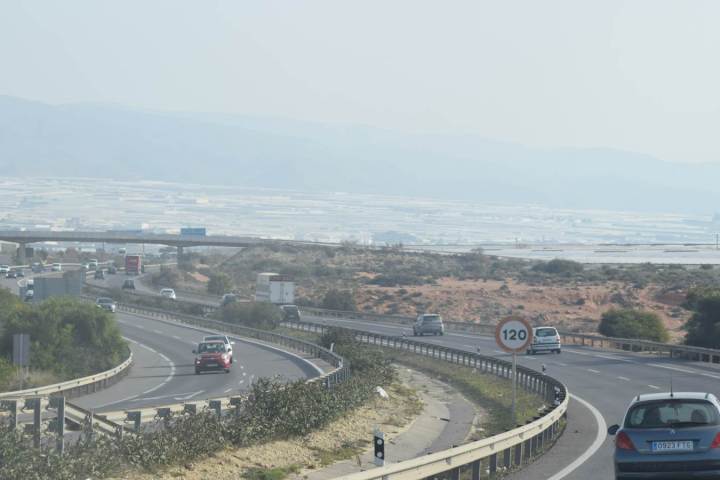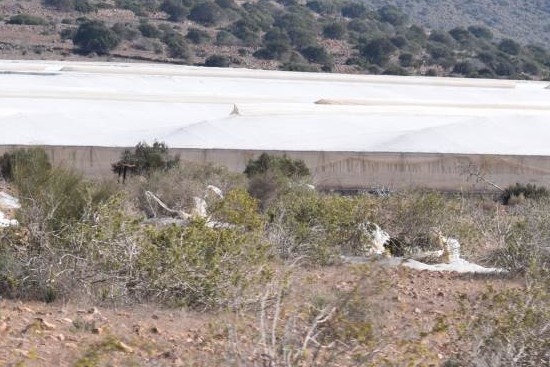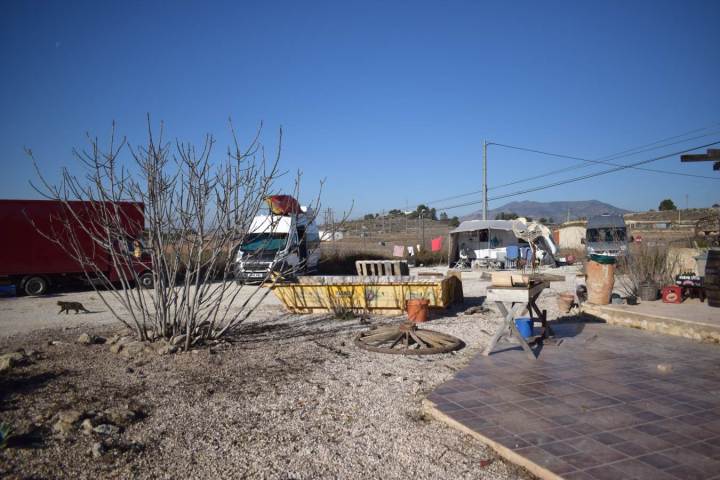Having bade farewell to Lloydy, we take his advice and make for Castillo de Castellar, an ancient and fortified village south of Gibraltar, much of which dates back to 13C. It sits within the Parque Natural los Alcornales and is one of the oldest Andalusian villages in Cadiz.
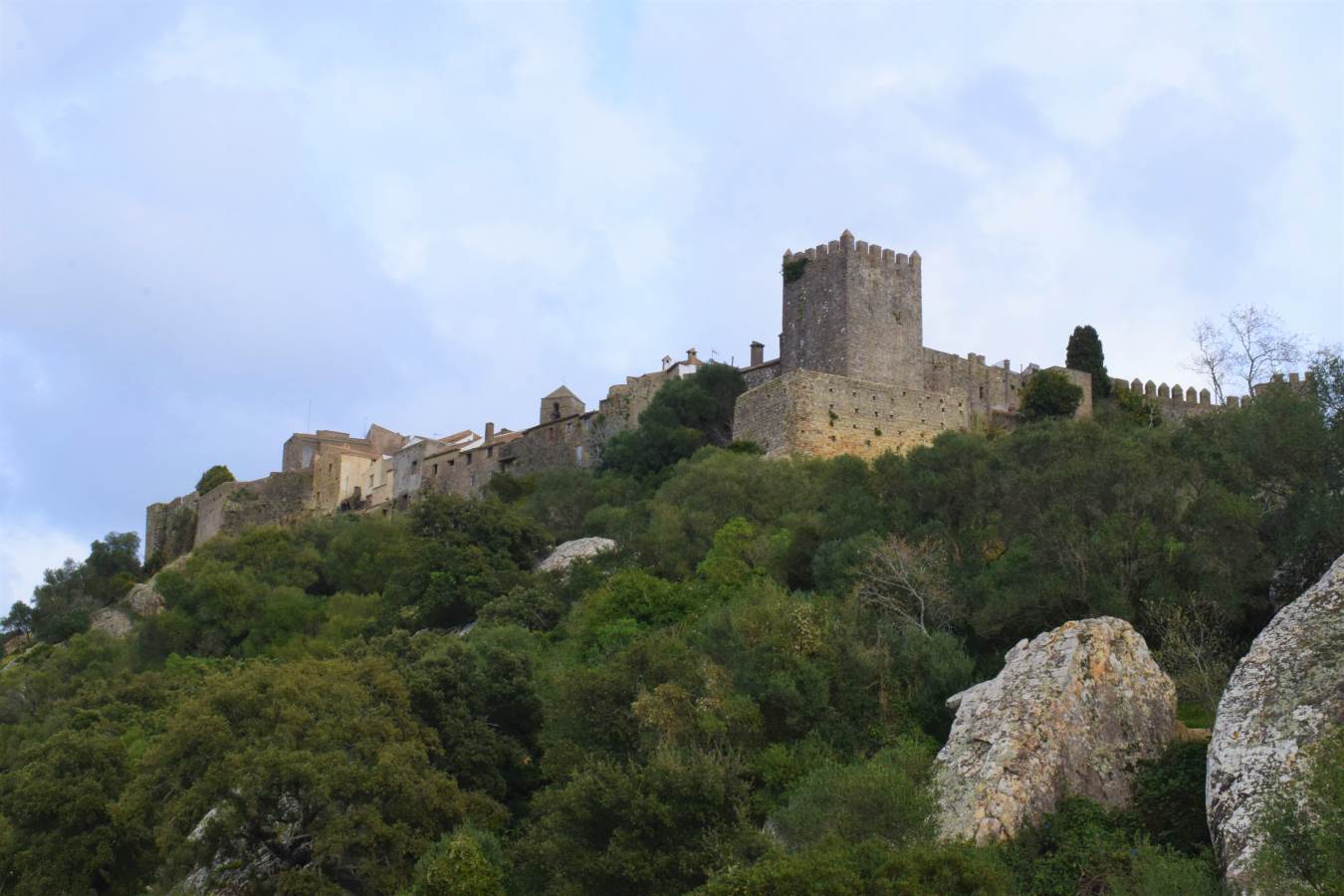

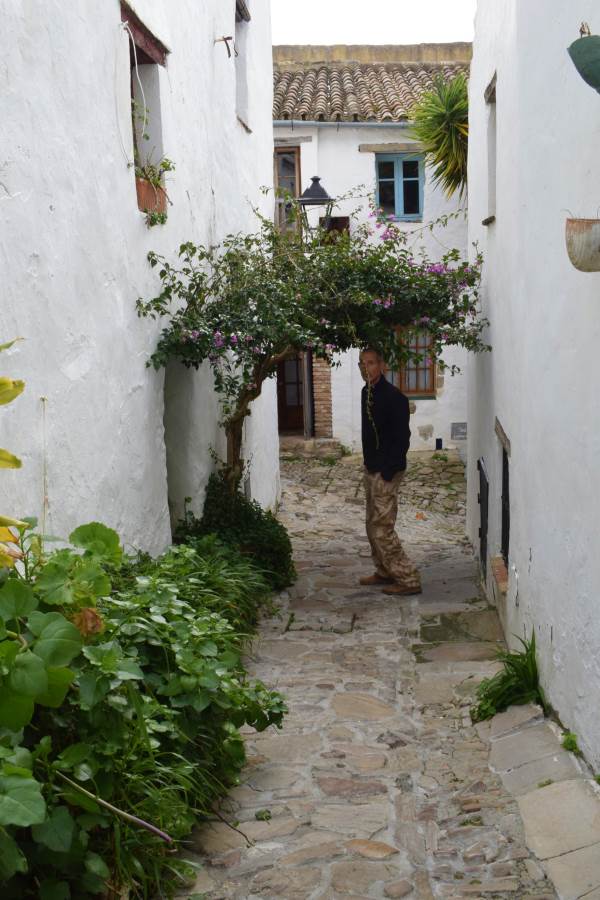





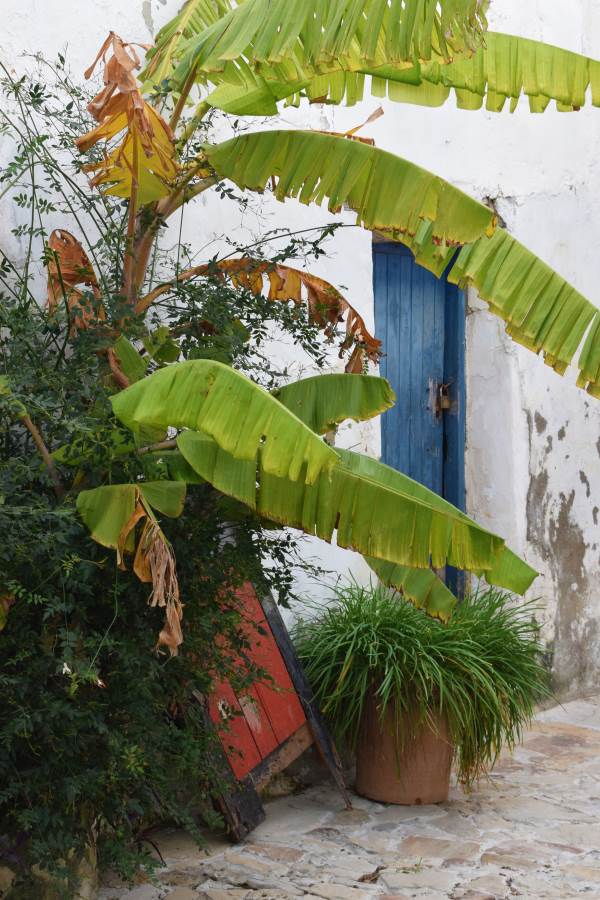

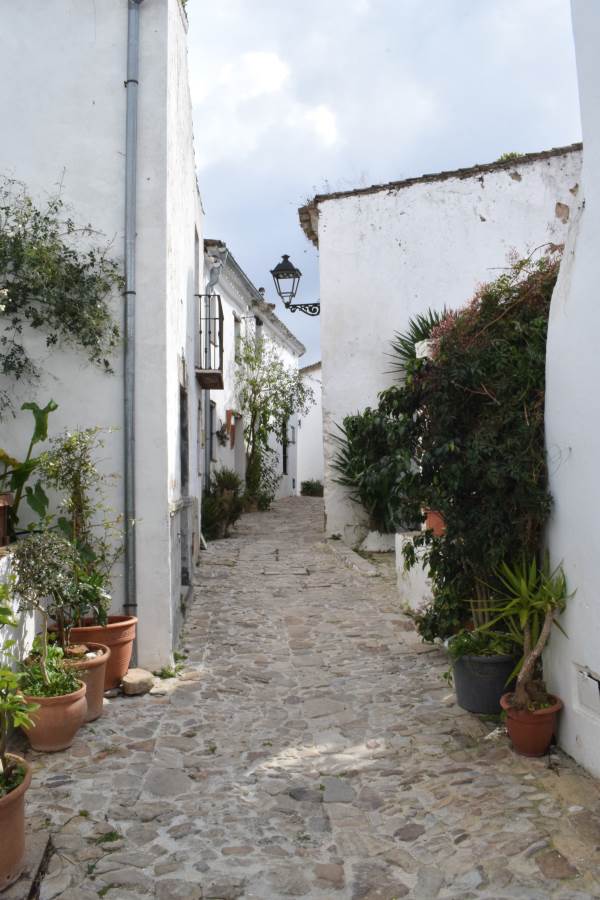
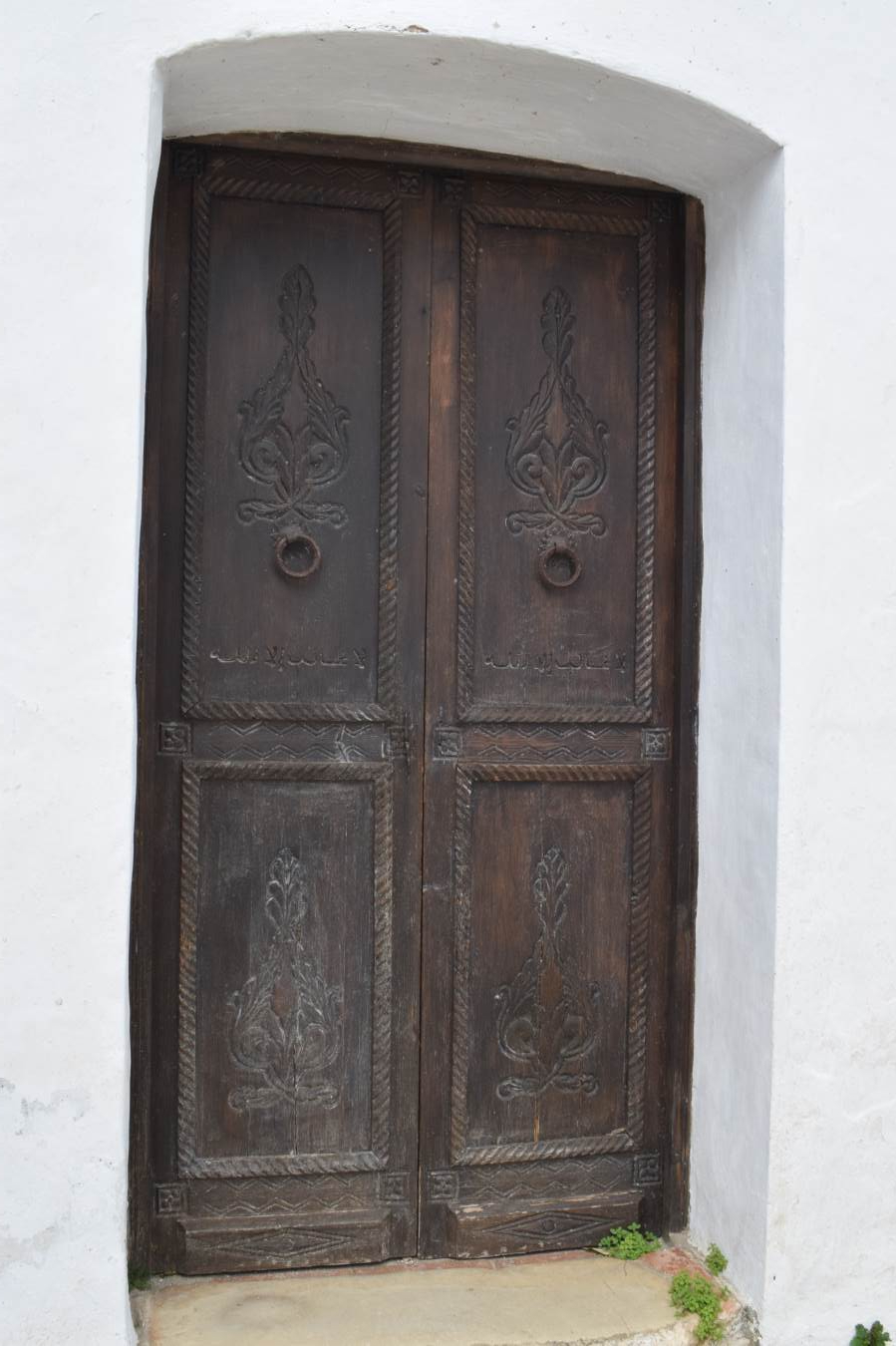

After a short stop to meander through it’s lanes and enjoy the views, we continue northward into the Parque Natural de la Sierra de Grazalema, through Ubrique and on to Benaocaz – both are among those villages known as ‘Pueblo Blanco’ as all the houses are white.

We stay overnight here waking up the following morning to a clear but cold day. It’s definitely walking country, and Ralph takes his usual early morning sendera this time along a short, 3km track, crossing clear mountain streams by ancient stone bridges and through woods of equally ancient holm oaks.

The building of the magnificent dam at El Chorro was first considered as a result of the 1907 Malaga flood which killed 108 people and destroyed 12 villages, leaving 12,000 people homeless. Read more about it’s construction here.

Continuing our journey through Grazalema, we head for El Chorro. The next few days turn into a time of exasperation as we deal with a series of unfortunate events as catalogued by Ralph in #vanlife : Some Times Don’t Roll Easy. We visit El Torcal de Antequera. It’s crowded so we hoppidy-skip over the very strange rock formations by-passing groups sitting in the path having their picnics.







After lunch we head back to the coast. We are heading for the Cabo de Gata and drive along the main road from Malaga to Almeria. This road follows the coast, but there is very little in the way of beaches as the hills disappear straight to the sea. We begin to notice the industry in these parts is horticultural-based as we spot massive polytunnels splaying out on either side of the road. I’m absolutely gob-smacked by the vastness and can’t quite take in what I am seeing.
As far as the eye can see, plastic covered greenhouses stretch out towards the horizon…





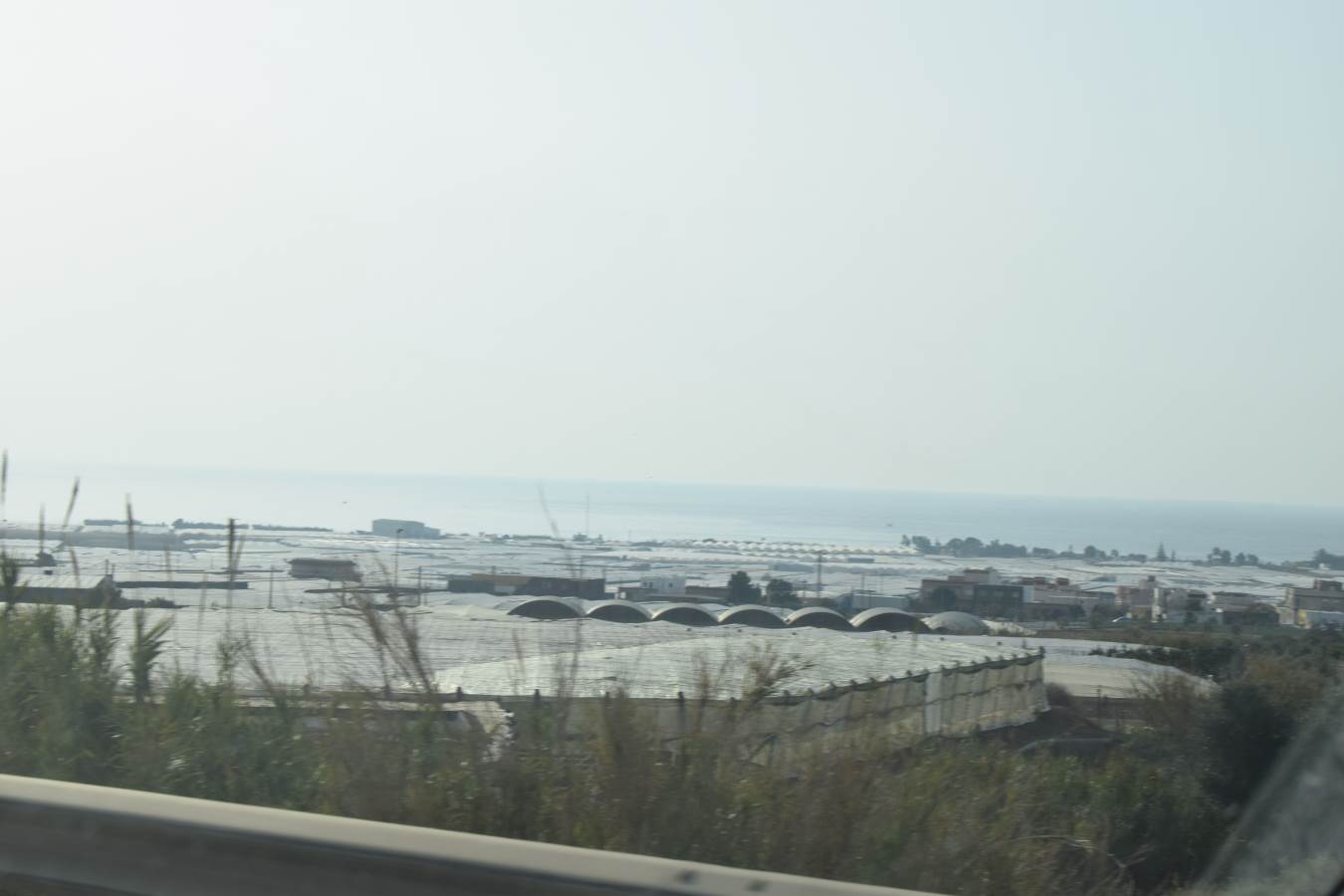
… and of course, with it comes the inevitable rubbish.
These photographs do not do it justice. I’m snapping through the windscreen as we drive along the motorway. I had no idea such a place existed! Well, I began this trip with a view to widening my horizons and learning new stuff. I did a quick ‘Google’ and learned that there are 26,000 hectares of plastic covered greenhouses here. The land is desert and the only way to grow anything is by hydroponics in these polytunnels. The reflective nature of the plastic has actually caused the local climate to reduce whilst the rest of Spain sees temperatures increase. More than half of the Europe’s demand for peppers, tomatoes, courgettes and cucumbers is met here. Click over to Amusing Plant and read on, it’s not that amusing. (Note: 21/4/2020 see this BBC link also – it has certainly made us think about where we buy our veg from).
What also really got me about this place was the absolute lack of concern about the plastic detritus that was being blown all over the place. These polytunnels lead right up to a national park! Between every cluster was the remnants of the previous coverings, piled high but breaking up and floating off over hill, sea and God knows where! I think about how we are all trying to reduce our plastic use, banning single use plastics, using bamboo cups and wooden toothbrushes, doing regular beach cleans and making real efforts, each of us in our own way, and then you see this and despair. But I guess when consumers want food out of season… food for thought indeed.
We spend a few days around the Cabo de Gata. Ralph was so awed by this area that he has written separately about in blog post #17.
Whilst here we hear from our friends, Jessica and Martin, who have also driven their van to Spain. They are up the road a bit volunteering for a couple they made contact with through one of the Facebook groups. We offer to come and help and they take us on.
We set our course for Finca los Figos – now known as Bar Mucho!

Goats 
Windmill 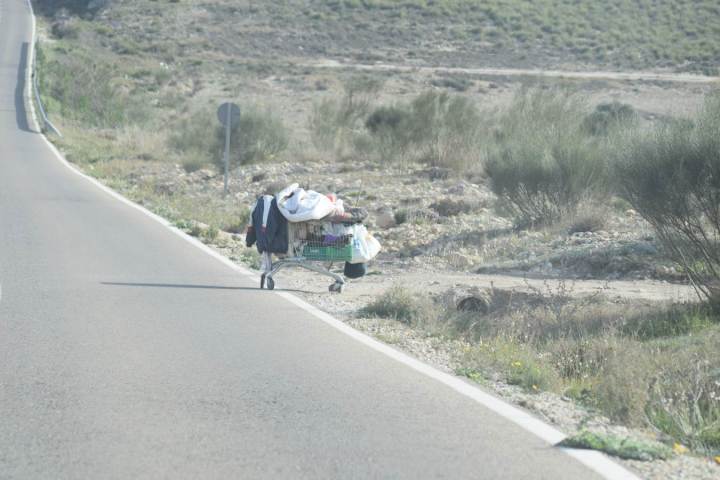
Shopping Trolley
It’s the hottest day so far with the temperature showing 26 degrees. It was so good to see Jessica and Martin again; I had met them at the Ride The Dragon event in Wales where we were all having a great time on our luges. We were introduced to Sabrina and Bas, the Dutch couple who owned Finca los Figos and soon learned the hows and whys that brought them to this place.
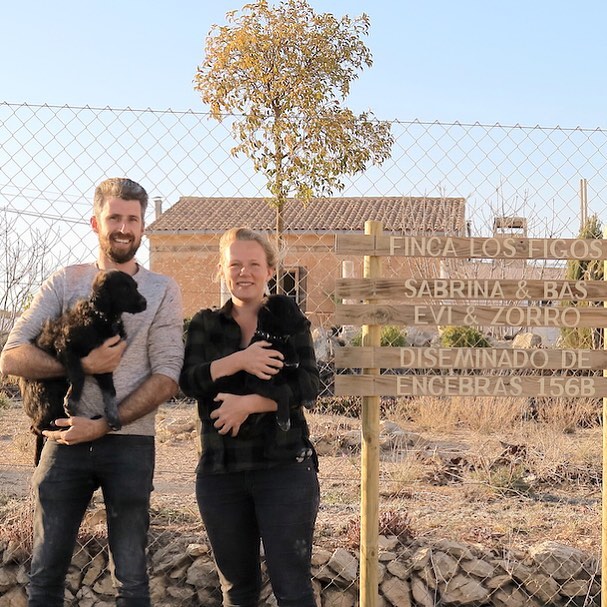
What was once a restaurant and bar, and had stood empty for 4 years, is now being transformed to cater for motorhomes and campervans. Situated on the outskirts of Pinoso in the Alicante province, Sabrina & Bas have already made much progress in the few months they have lived here. There are no services other than water and their home is a caravan on the site, which they share with their two cute puppies, Evi and Zorro.
Jessica is working steadily on signwriting. Apparently, no post can be delivered until there is a proper sign. Well, that’s what they got! You can see more of Jessica’s handiwork here.

Probably, the best 
art studio 
in the world.
There is a large area set aside for the van site and large piles of bright, white aggregate dotted throughout waiting to be raked level. A retaining rock wall had been started so Ralph joined Martin to continue that job. When the site had been levelled, the bedrock was very close to the surface so a lot of the rocks where scooped out and piled to one side. They made a great effort in aligning their rockwork with the natural strata and picked each rock specifically for this purpose and thoughtfully placed it.

My job is to prune the fig tree. There are two huge trees and I was to do one and talk Jessica through it so she could do the other.

Before 
After
The next couple of days I work on planting up the border. The soil is basically just limestone sand. I transplanted small shrubs and plants from around the site, using bought in compost to give them a start. When pruning the fig, I managed to retrieve many layered branches that had some roots and had some good cuttings also, so these were also planted up. A local guy, who came to buy the old wagons for restoration, showed us their method of propogating figs so a mix of techniques were used and I hope they are all successful!
It was an enjoyable few days here. We stopped for a cuppa at 12ish and had lunch at 2.30pm after which our time was our own.
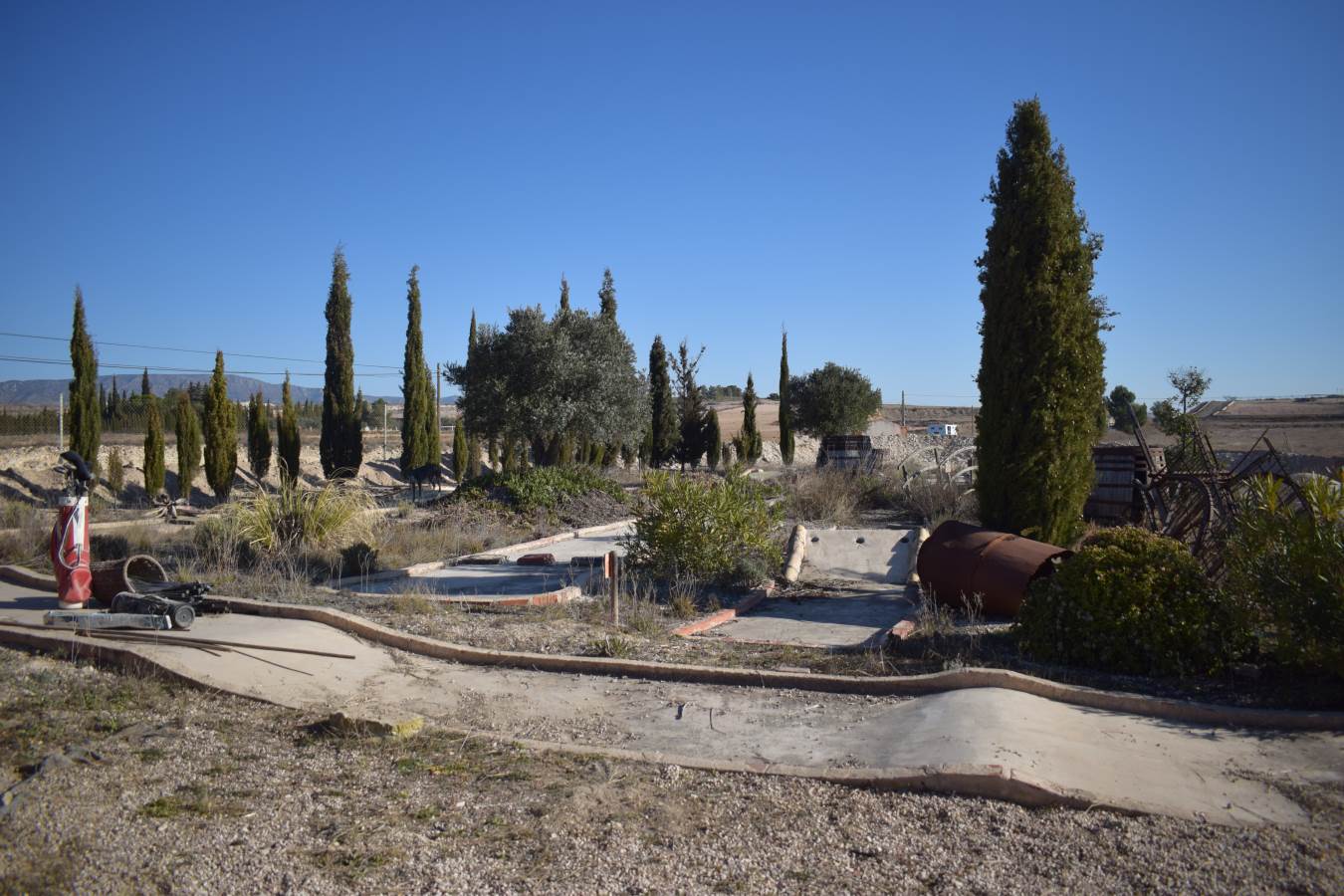




Martin had be practising downhill skateboarding so one afternoon we walked up the hill. It was about 2km and not steep, but I’m always nervous about skating on an open road so used this as footbrake practise. Martin disappeared in no time and we all met up at the bottom, in the village bar.
The last day we were there, we went up again and this time I luged down. Much more comfortable and enjoyable!
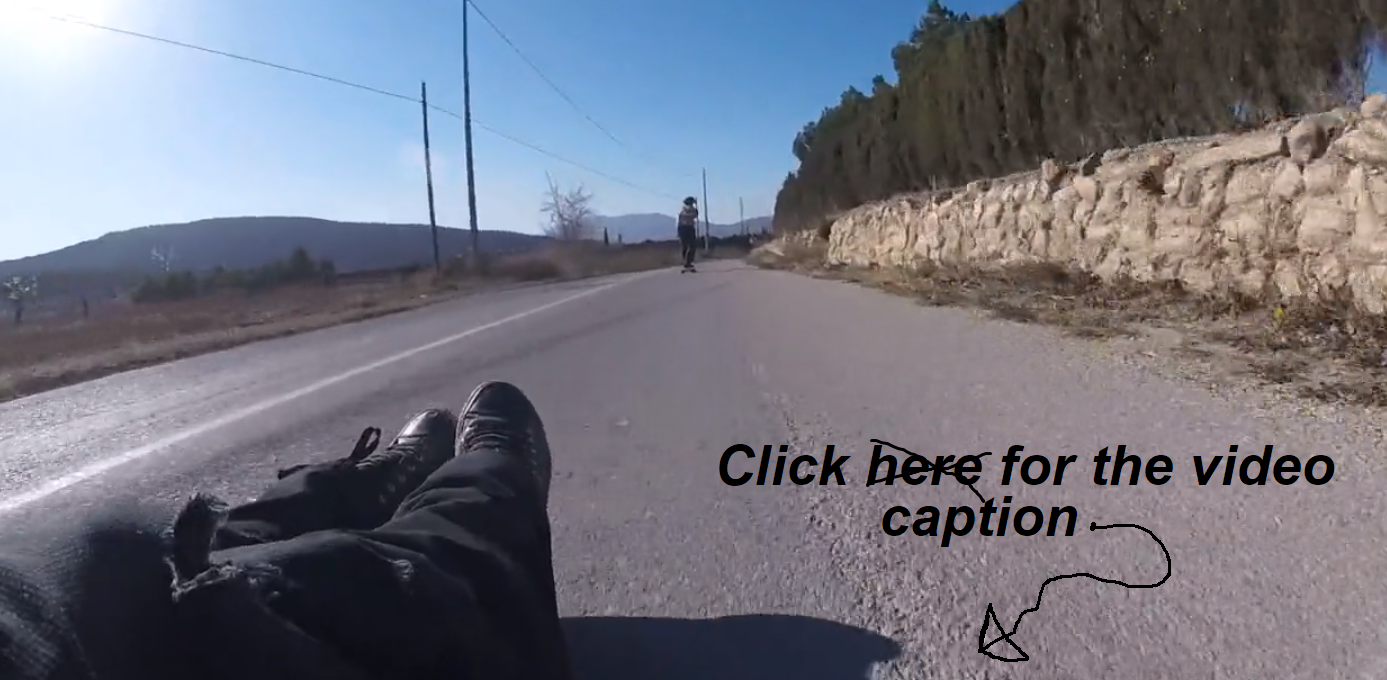
We finally tacked down the van, said our goodbyes and left for Finestrat. We were thrilled to hear our good friends, Donald and Sadie, were in the neighbourhood for a short climbing holiday. We we rocked up to the municapal carpark, next to the police station, near where they were staying and met them for dinner that evening.
The following morning we drove to Calpe where we were to climb. Unfortunatley, I have been suffering quite badly with back pain – like sciatica – and today was a day when it really got to me so I was very short-temptered and grumpy. Sorry everyone.














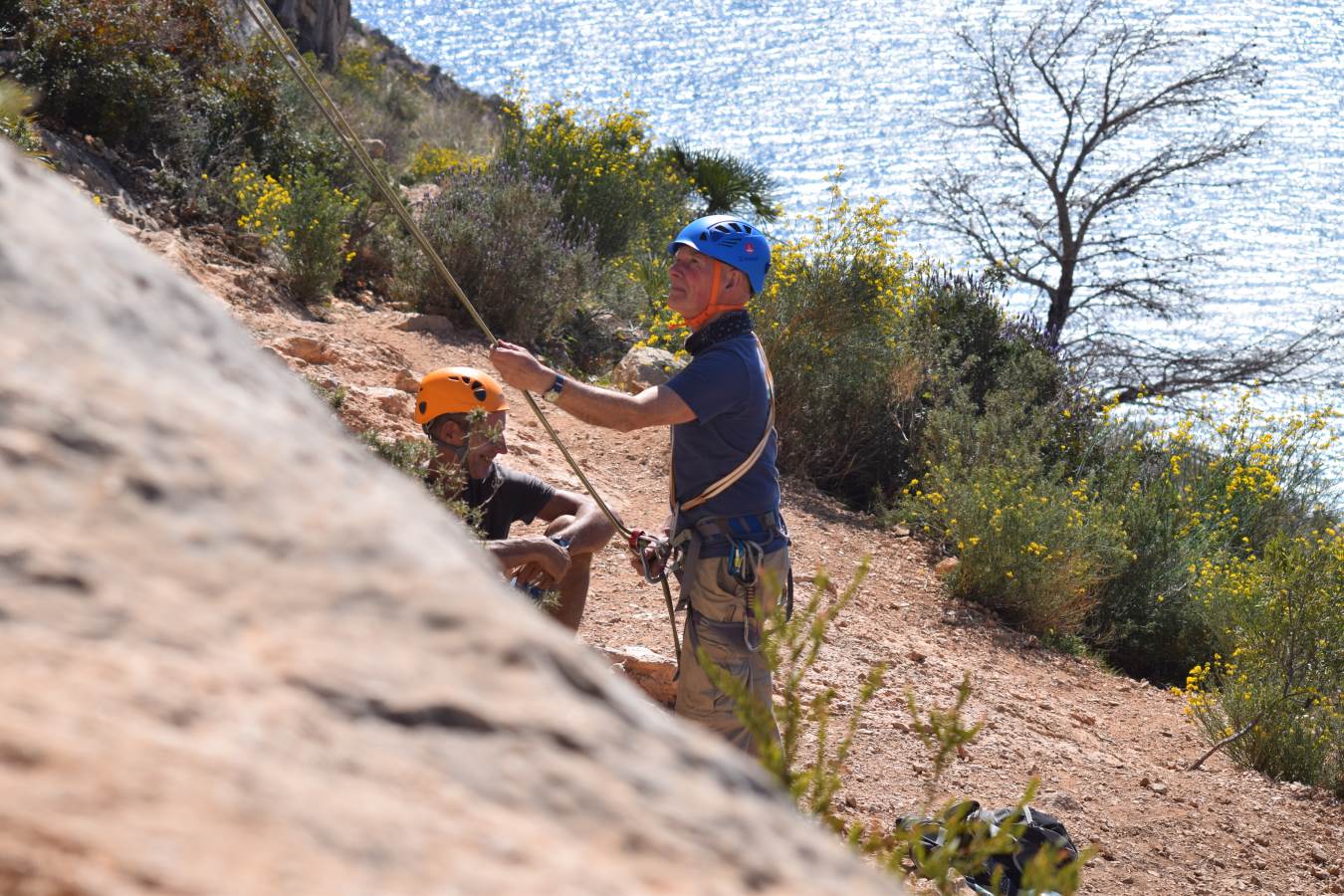
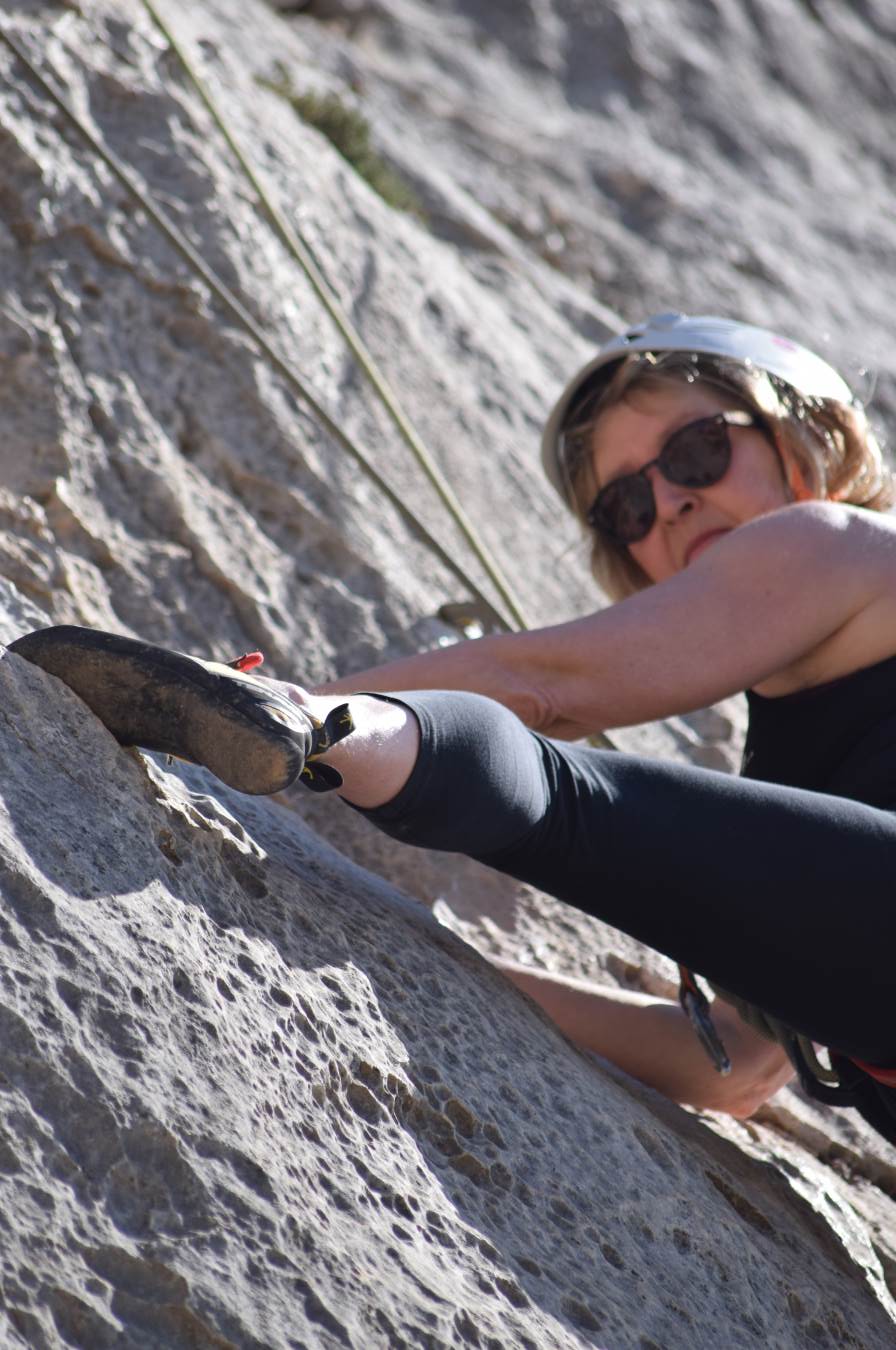



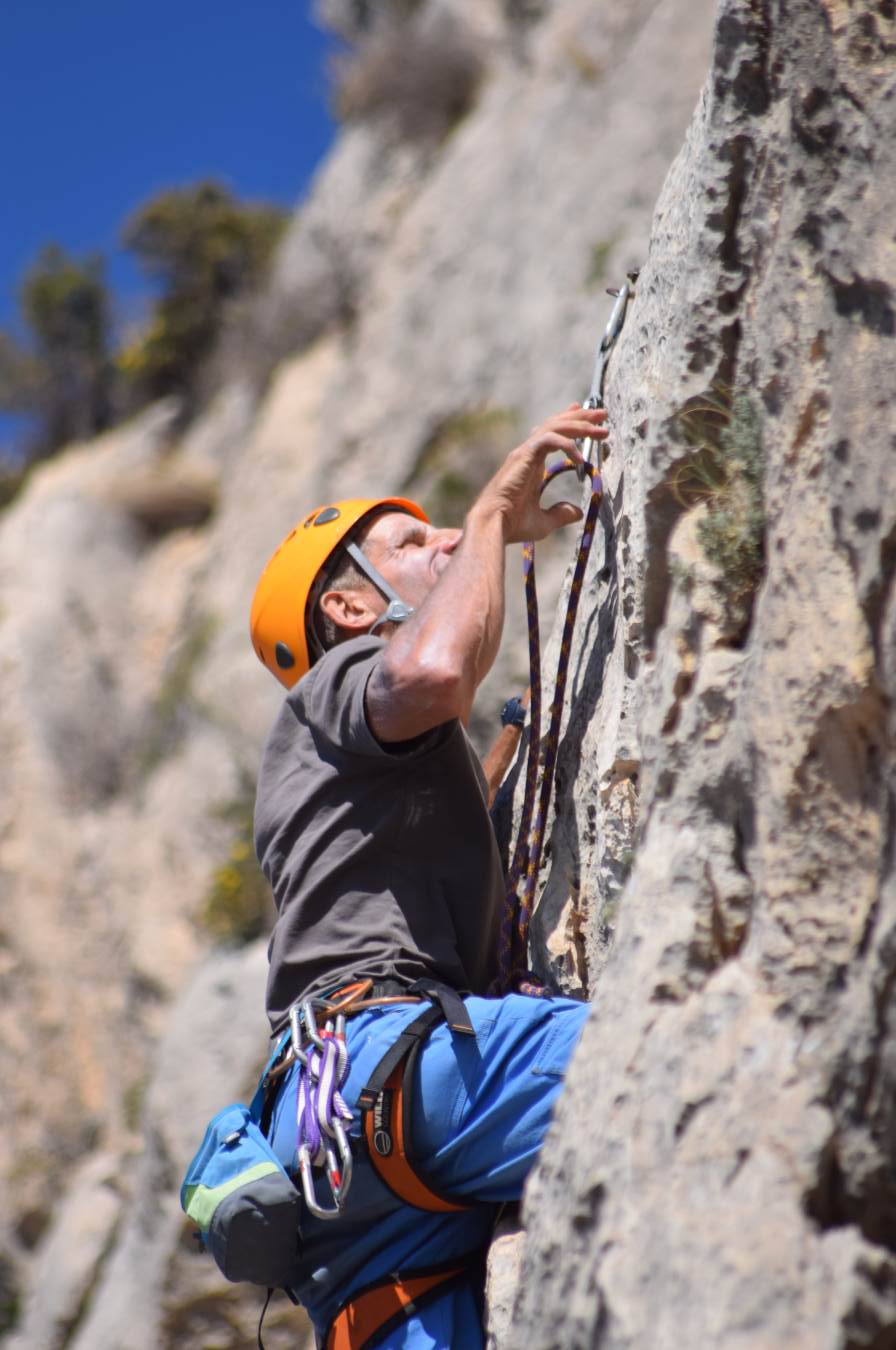









The following day Ralph, Sadie and Donald set off for a multi-pitch climb and I chill in the van catching up with study and blog posts.


View from the top of the multi-pitch 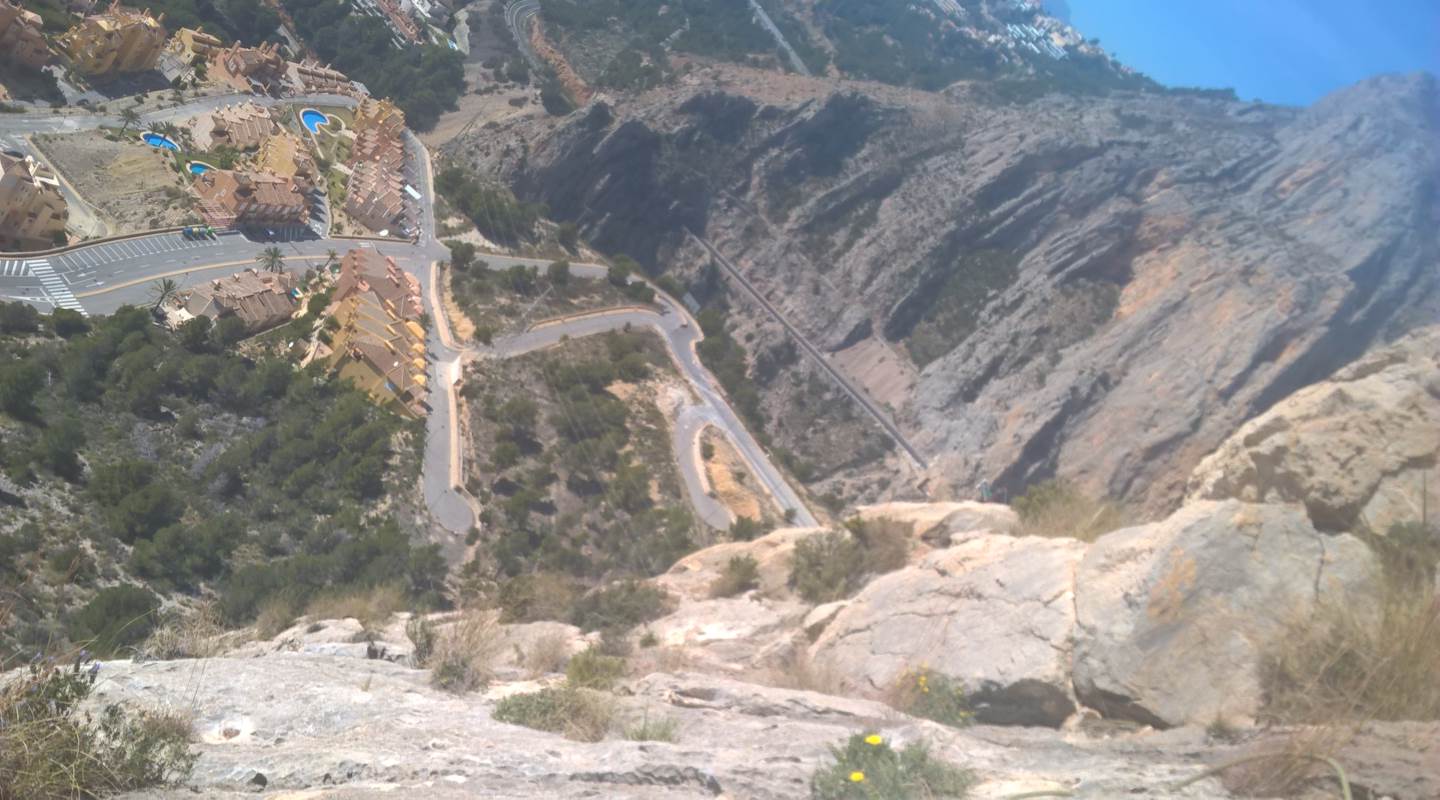
View from the top of the multi-pitch
They return towards the end of the afternoon and, after a cuppa in the van and some time chatting about their climbing, we go our separate ways. Just outside of Calpe we come across a cute aire with decent showers and free lemons.
We decide not to take on any more Workaway projects for the rest of the time we would be in Spain. We have plans to meet up with friends and family as we travel back to Basque and want to be relaxed to enjoy the scenery and take our time with our journeying.
It is now March. We have been on the road for six months now. Still no complaints and we are still happily married.
We drive on to Cala Moraig, it’s a small beach down a 22% hill. Beautiful water, clear as glass and we plan to get the kayaks in tomorrow. It’s also meant to be good for snorkelling. By the evening, the other vehicles have left leaving just us but later on another van turns up and we have a chat with them. It’s always comforting to have other van people nearby. Around midnight we hear a car screeching into the carpark (it sounded like they’d overshot the end of the road and spun around the gravel!) There’s lots of shouting and coming and going. I’m peaking out through the top of our blinds and can just make out the dots of lights from their phones. There is a huge cave and they disappear into that. Then another car turns up. Some very odd behavious and transferring of people, a quick donut around and they disappear. Then the Guarda arrive. Twice, in fact, throughout the night. Very disturbed night and, just as we are finally dropping off, in the early hours other camper vans start turning up ready for the weekend!

Saturday morning, went kayaking
We spent the weekend with my Cuz, Lesley, and her husband Mark. They have a gorgeous place in Benidoleig, where they retired to but hoping now to return to the UK. Look at these amazing views, don’t you want to live here? I haven’t seen Lesley in absolute years and we spent the whole time nattering and catching up with what our respective families have been up to.

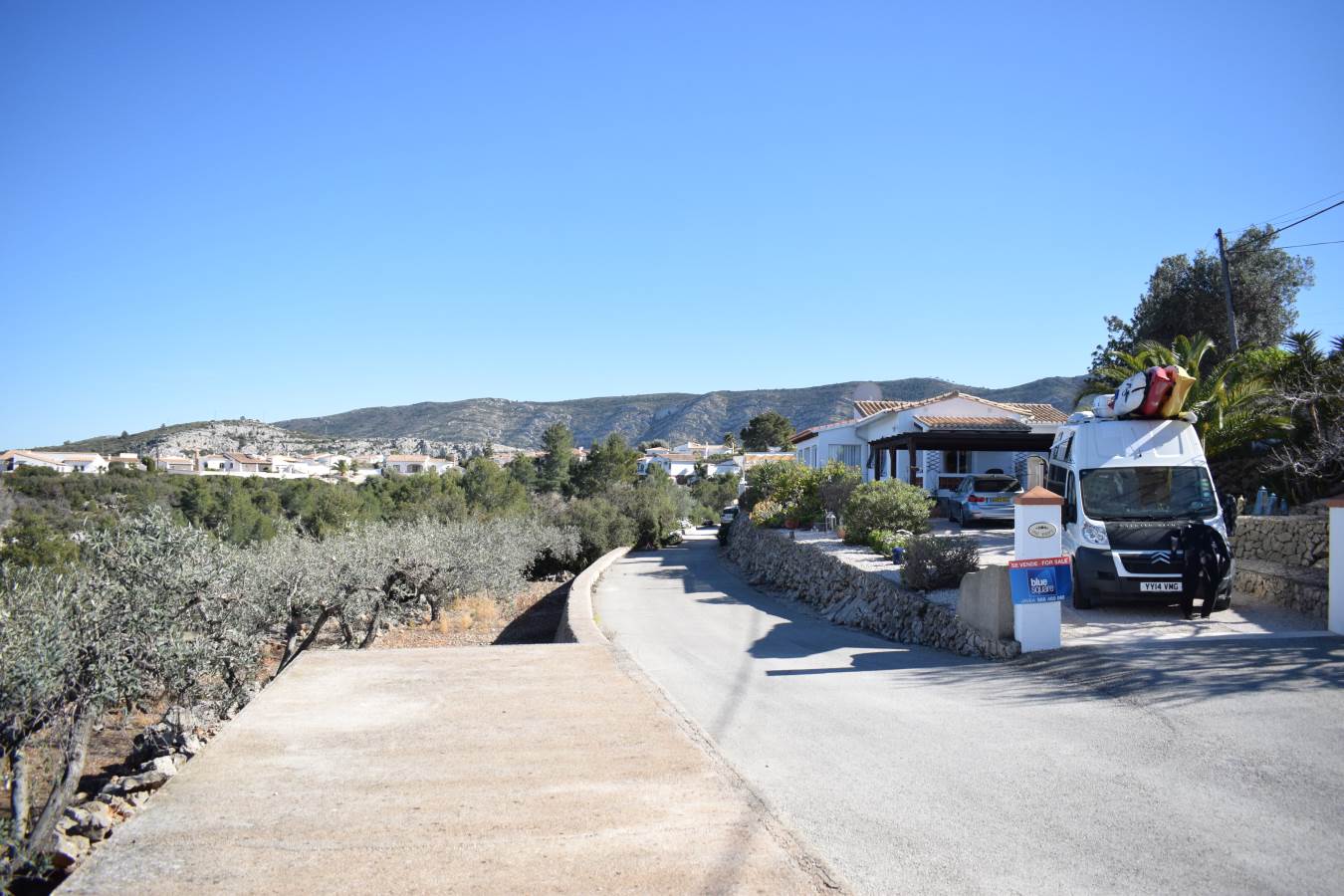





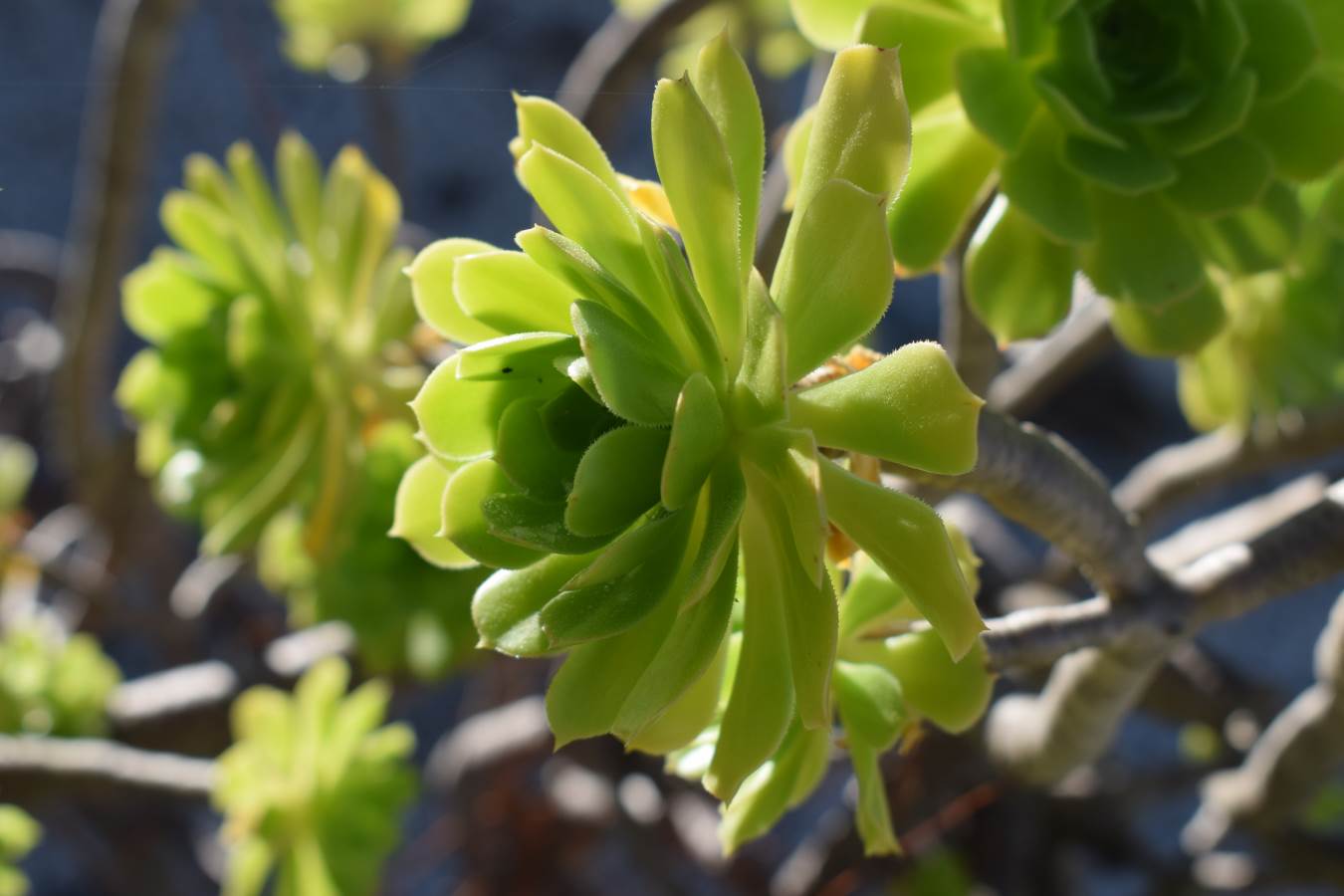
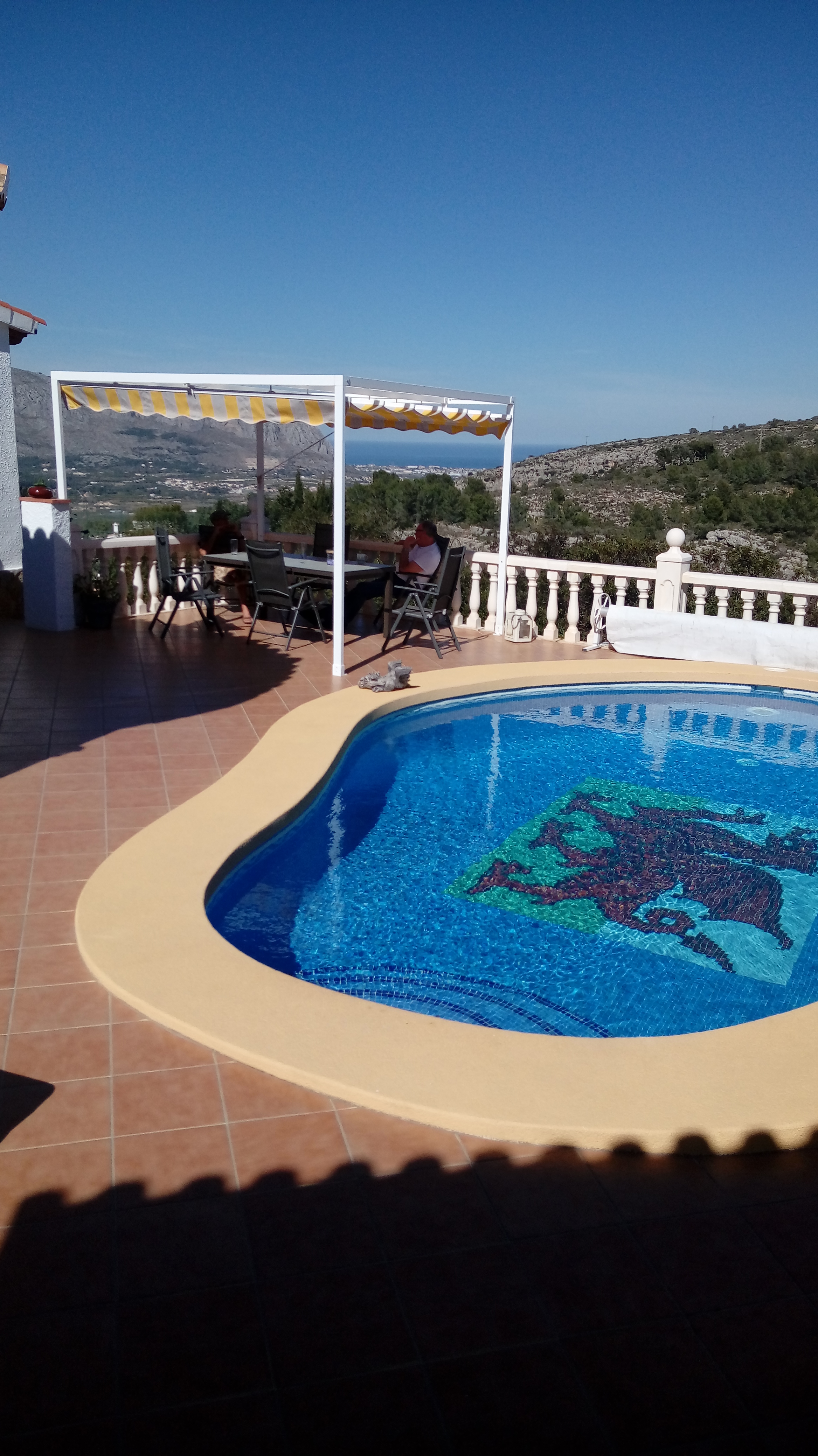
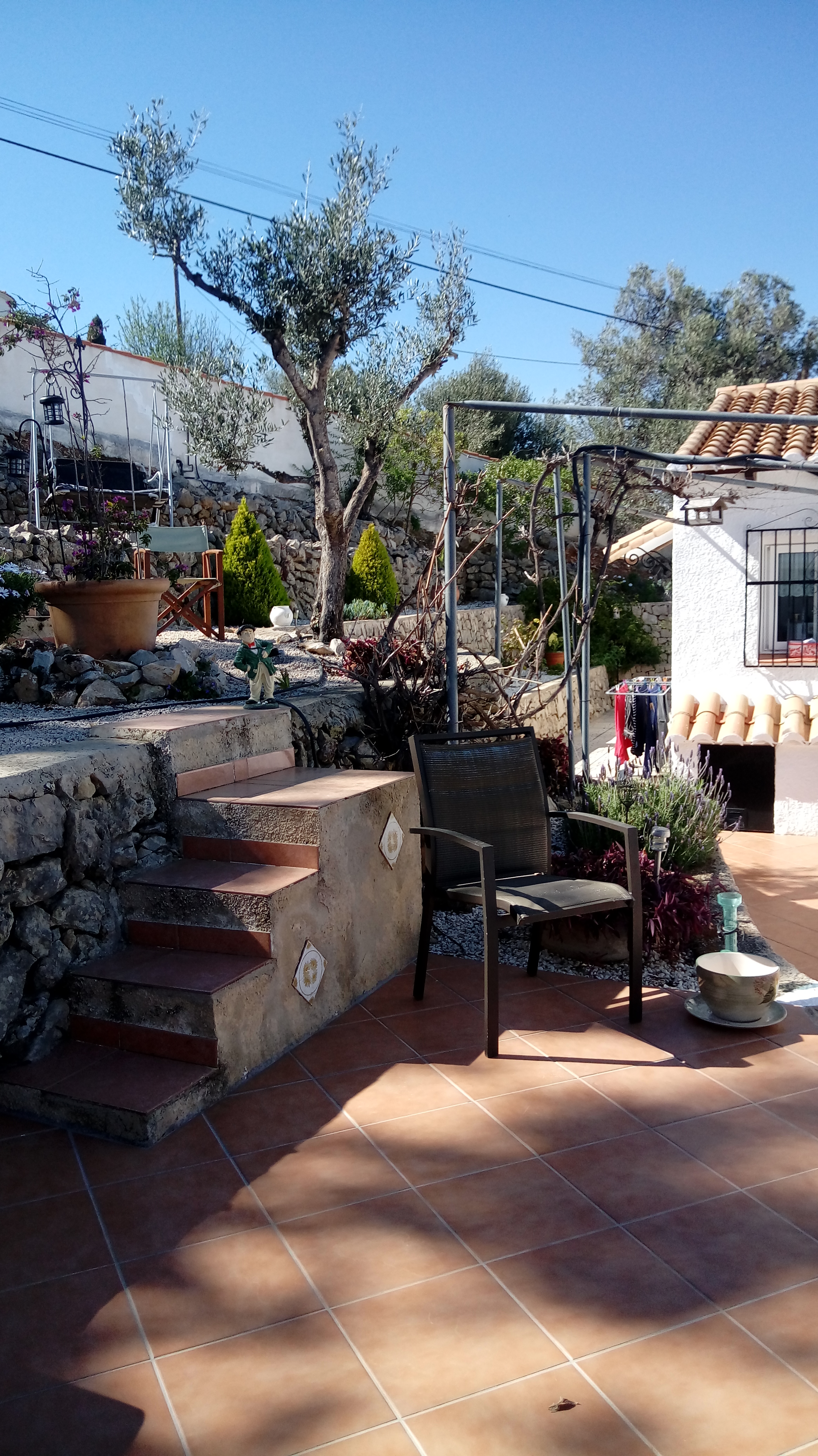


Next stop is Valencia. We found a secure site outside the city and took the bus in and getting off at the City of Arts and Sciences which is an entertainment-based cultural and architectural complex – one of the 12 Treasures of Spain. We’ve now been to 6 of them.
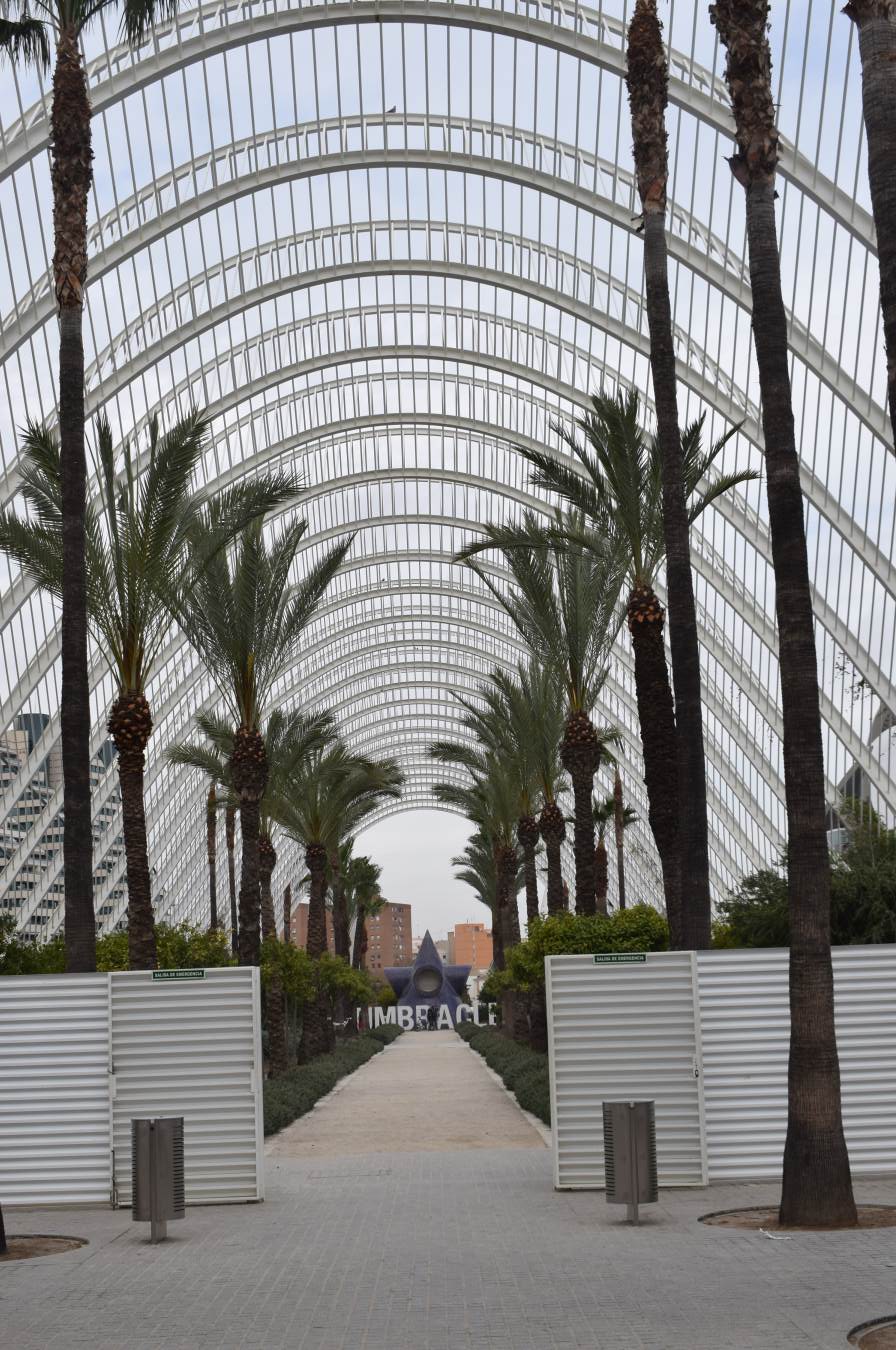

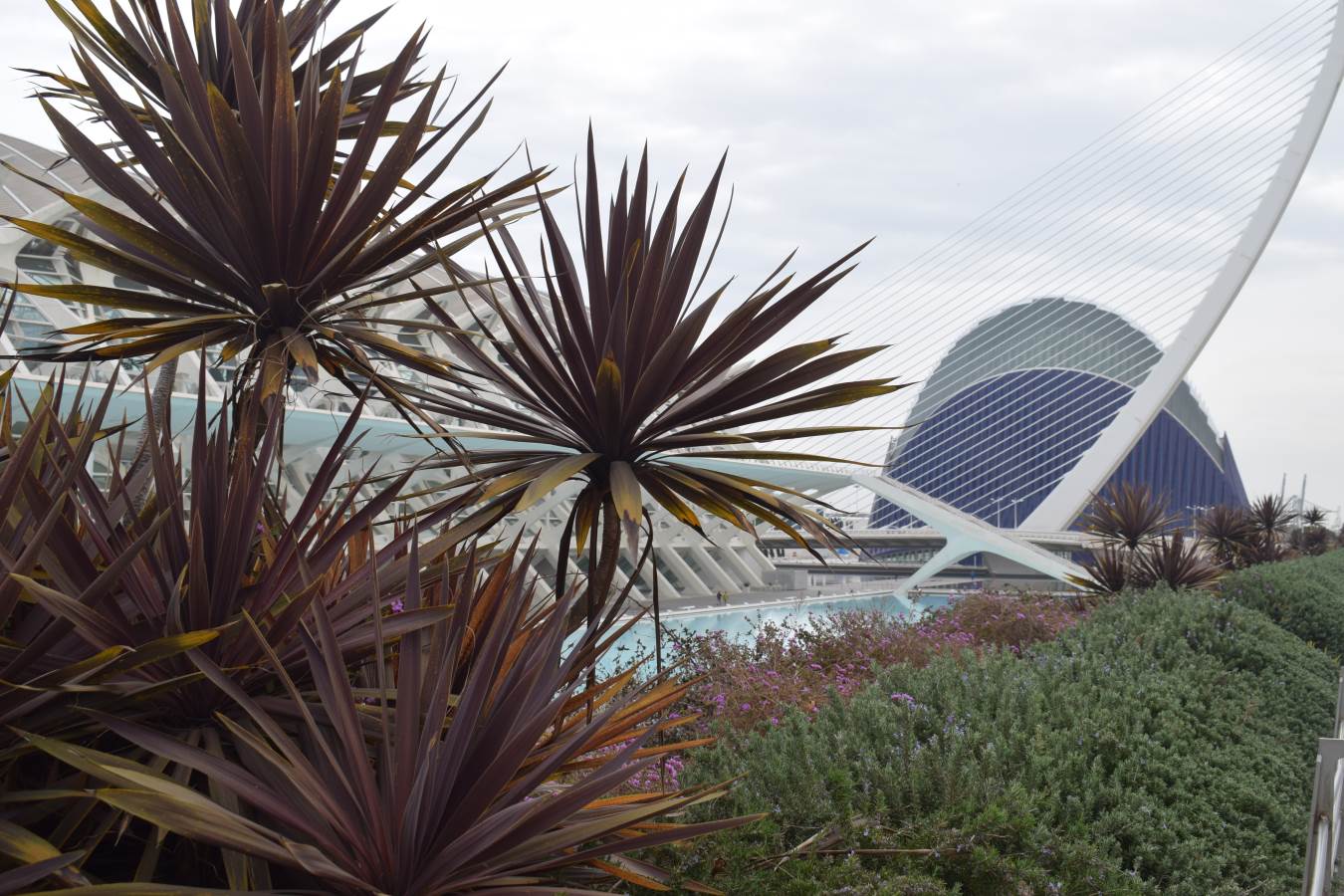




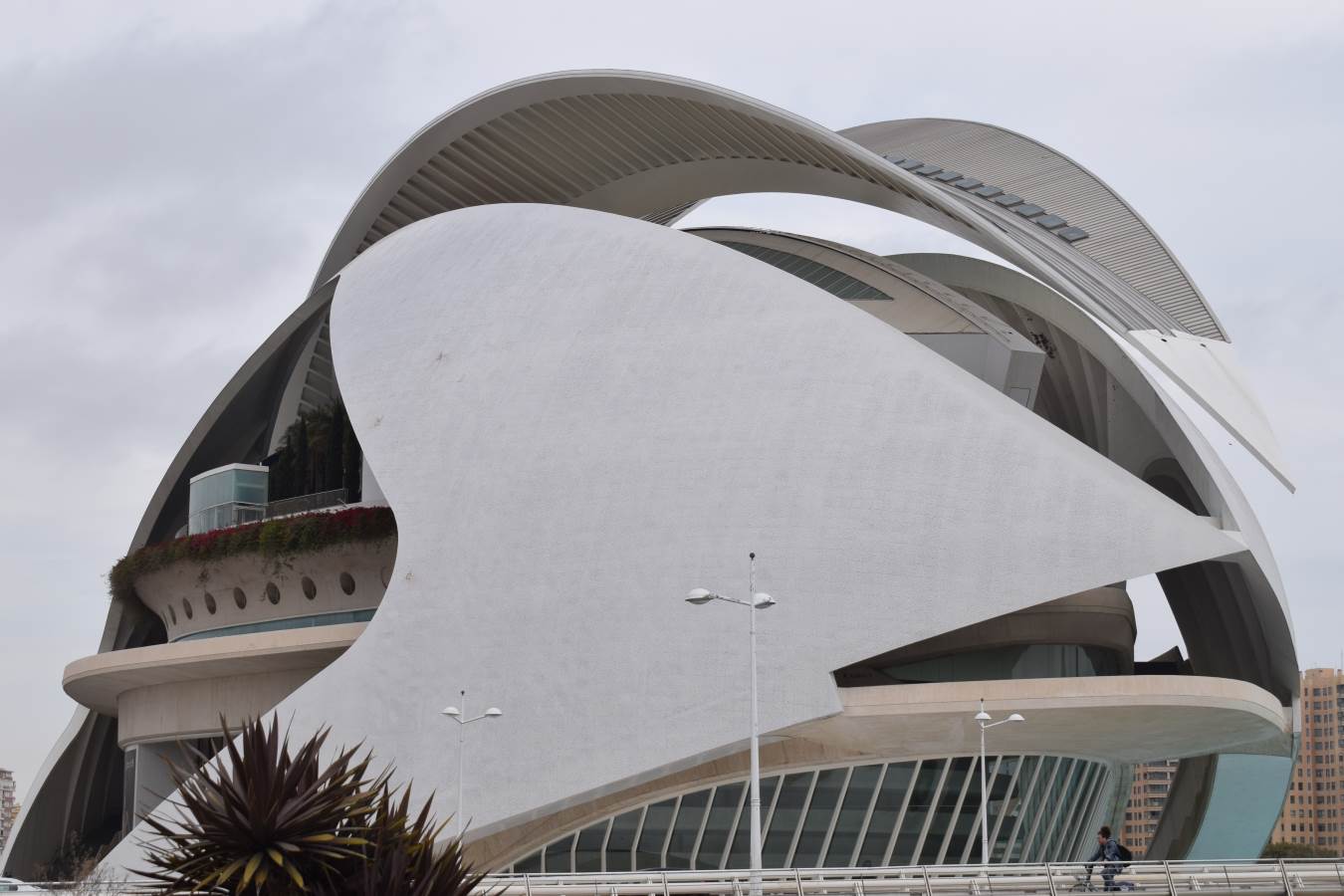



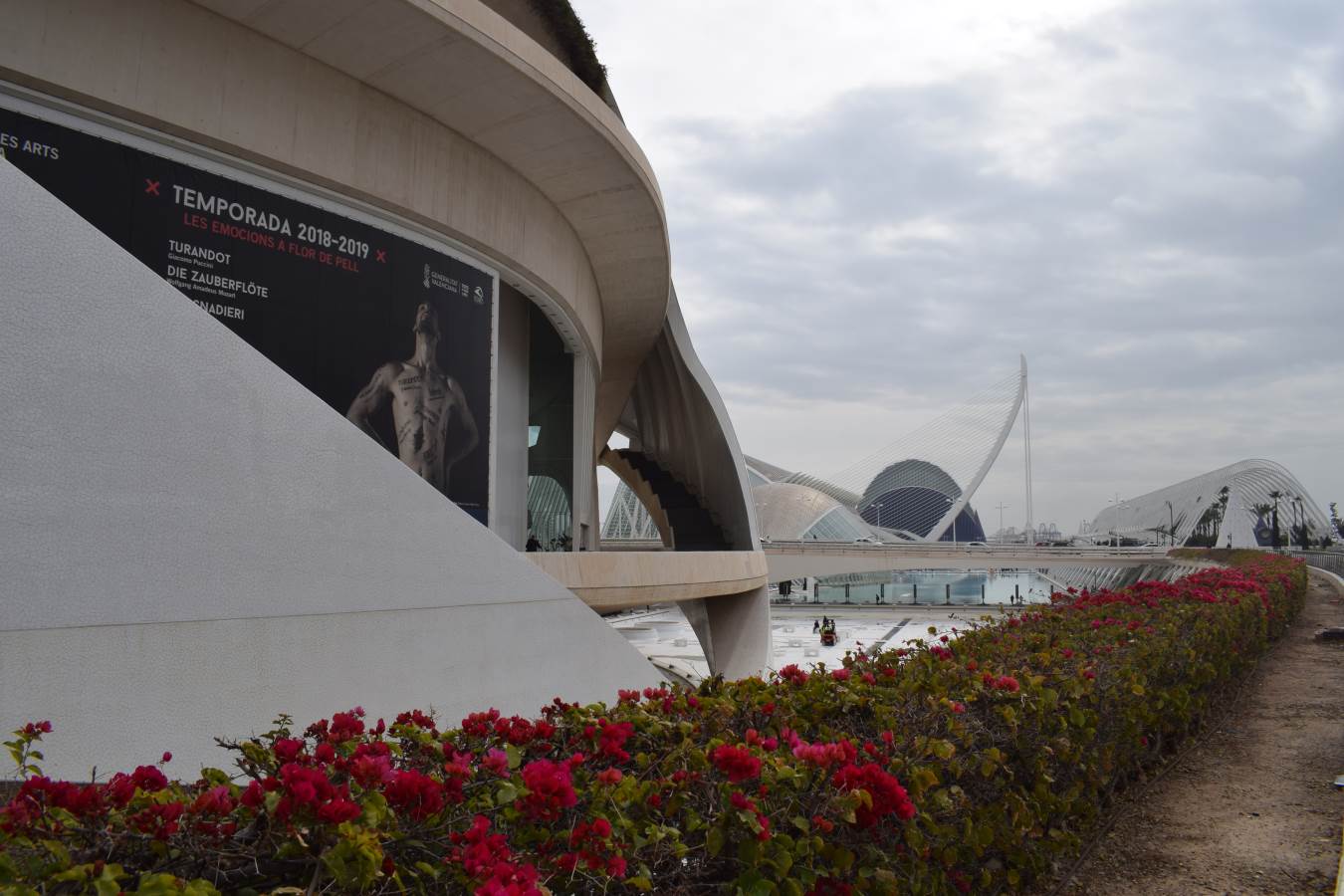

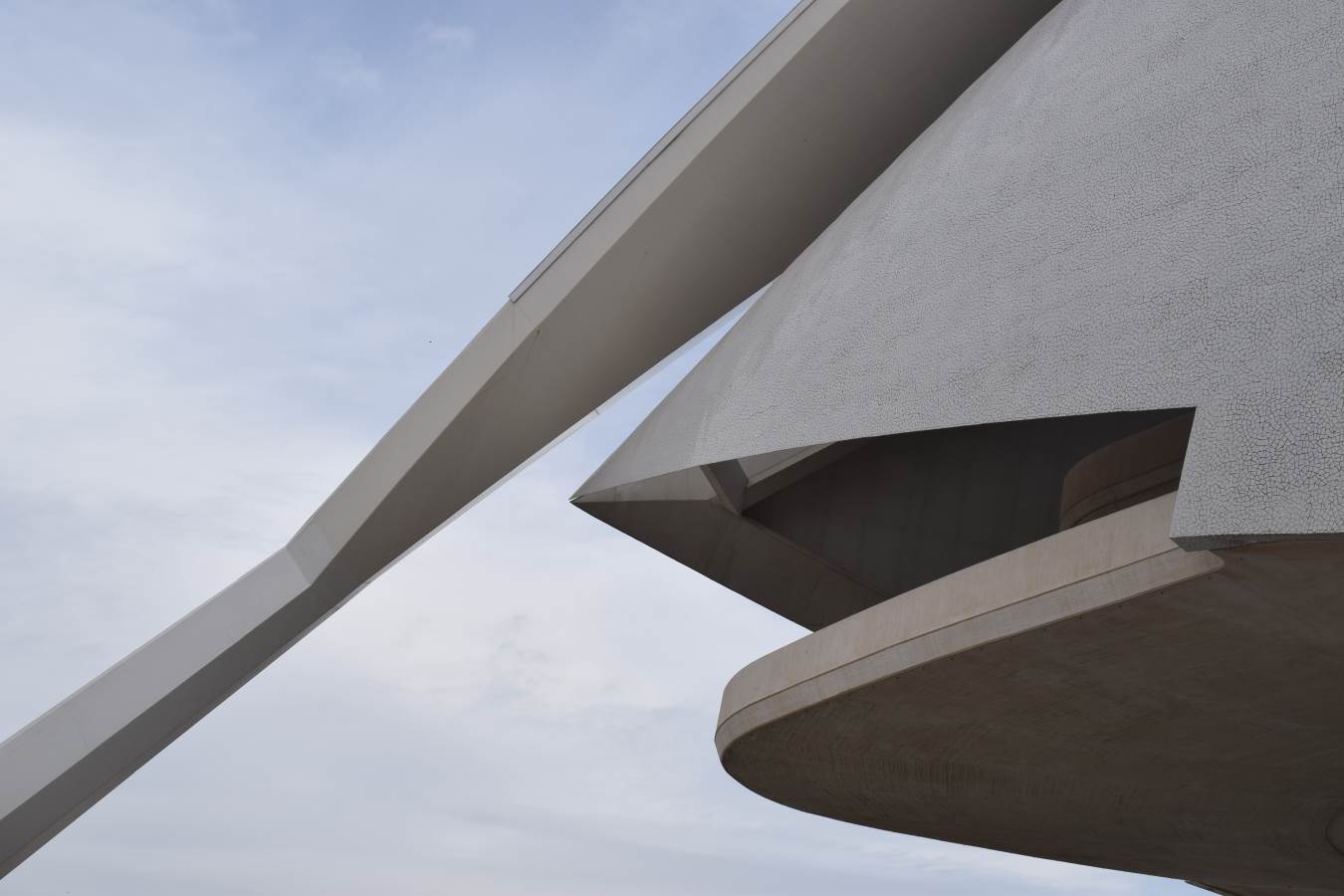

From here we walked down into the greenspace now known as the Garden of the Turia, but in fact once was the River Turia.
The river was notorious for flooding and, after the Great Flood of Valencia on 14 October 1957, which flooded large parts of the city of Valencia, killing many and damaging building, a diversion project was devised. “Plan Sur de Valencia“, completed in 1969, saw the river divided in two at the western city limits. During times of flooding most of the water is diverted southwards along a new course that skirts the city, until it meets the Mediterranean.
Here are a few shots from the gardens. They run for 9km through the city and we only managed some of it before turning off into the old town. Have a quick ‘Google Map’ search of Valencia, click to satelite and zoom in to get an idea of how awesome it is.



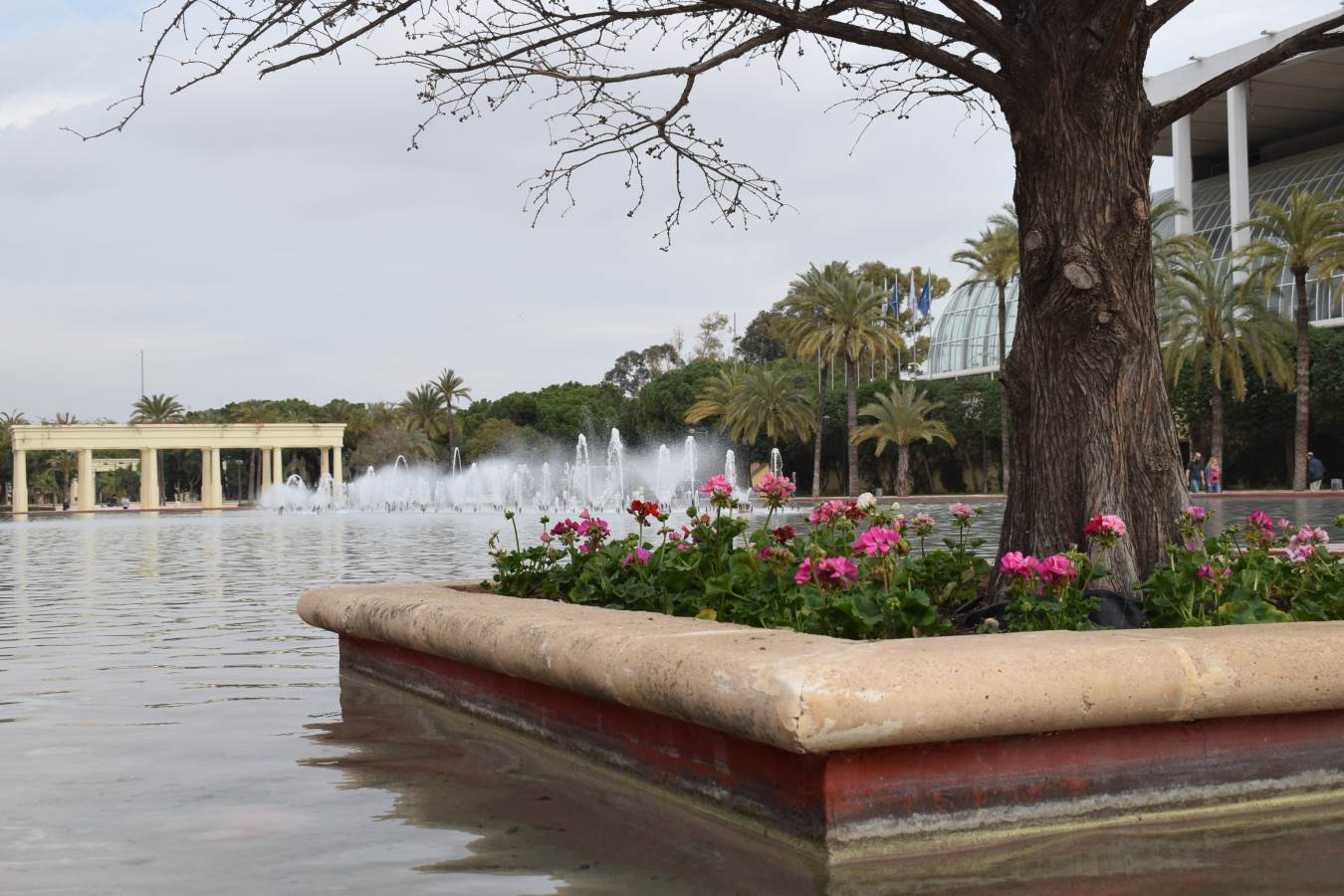




We have never seen trees like these before. We believe they are called Bottle trees (Brachychiton rupestris) but if anyone knows for sure, do tell us!





Bottle trees (Brachychiton rupestris)
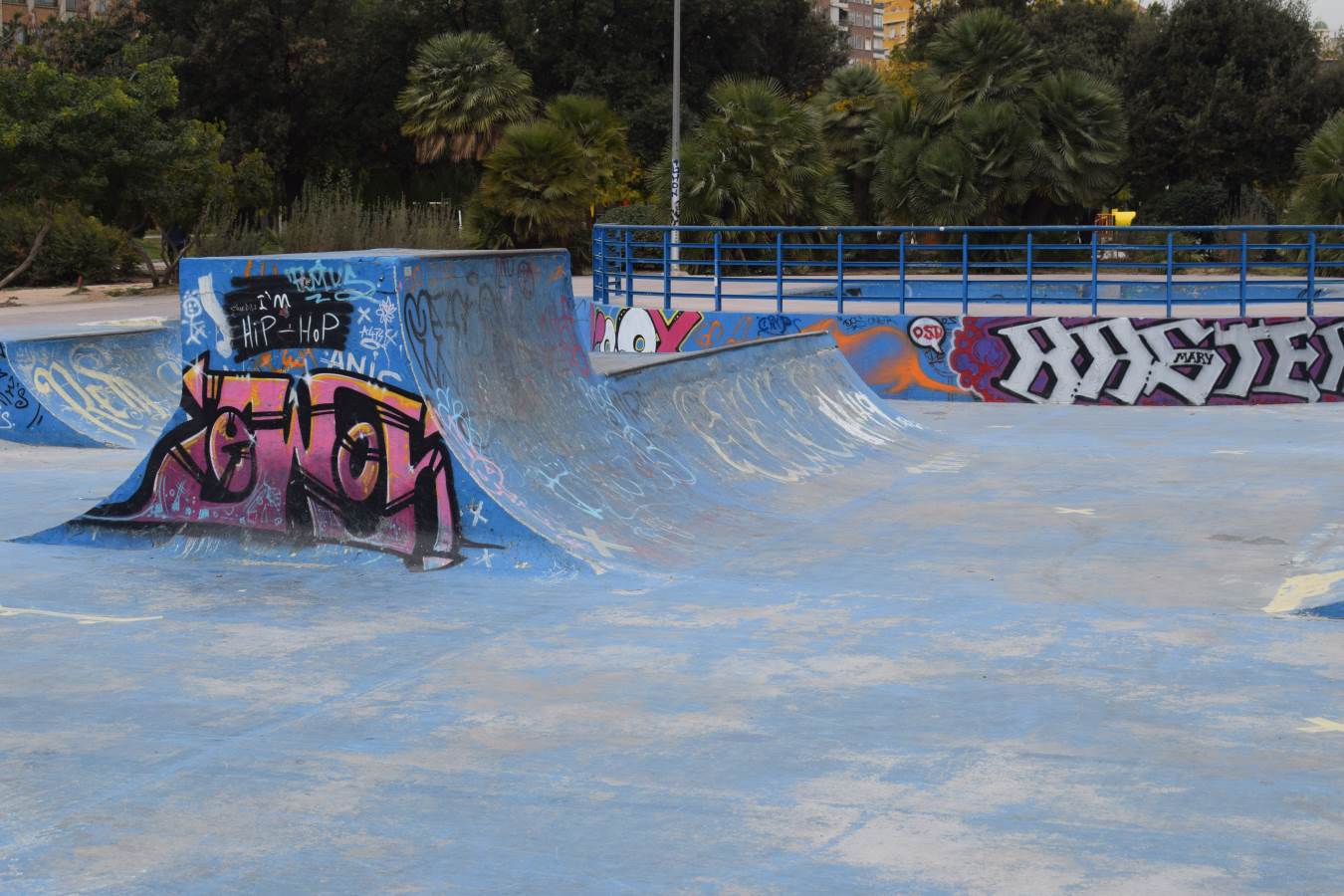




There were places set out of everyone of every age to play at something.

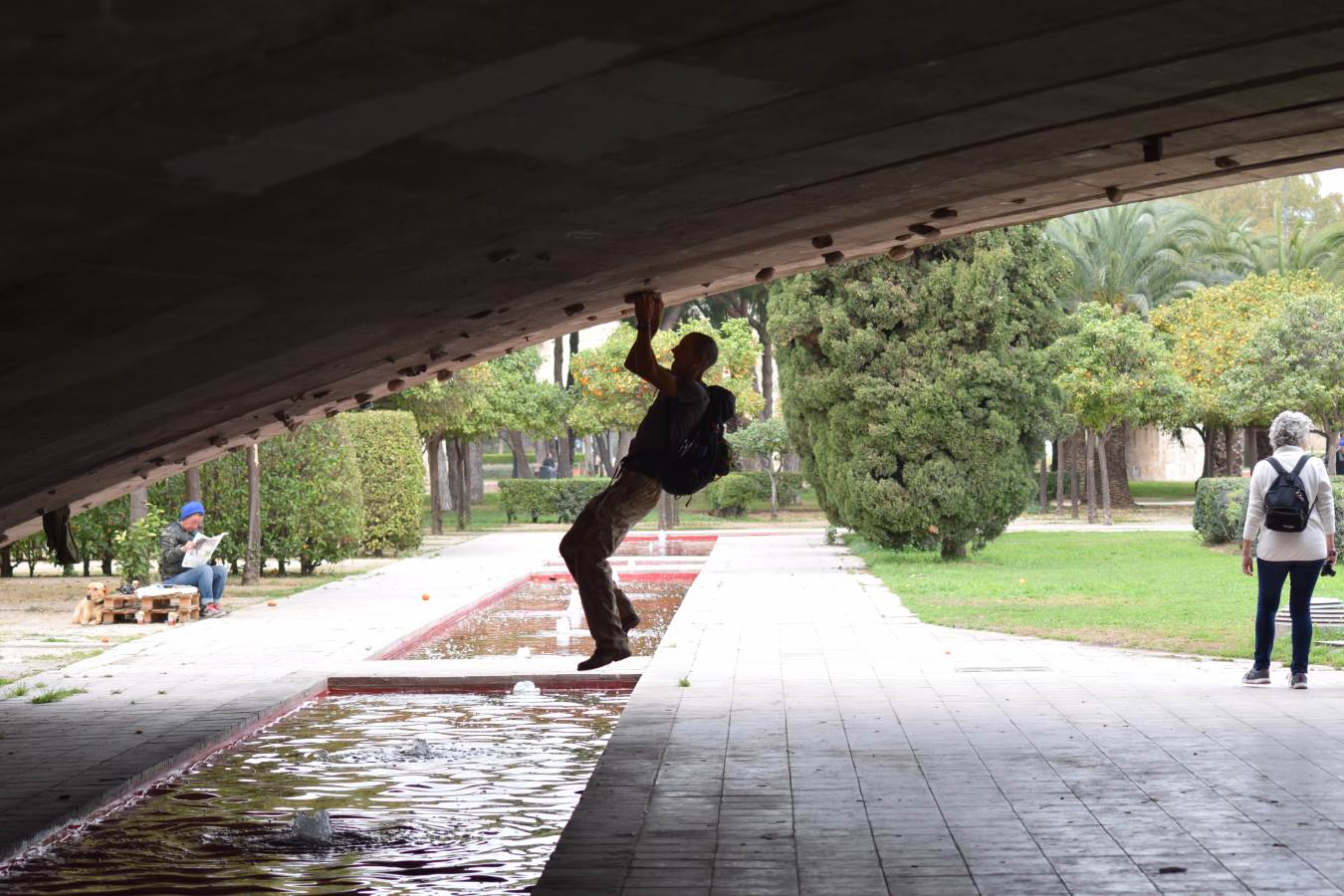
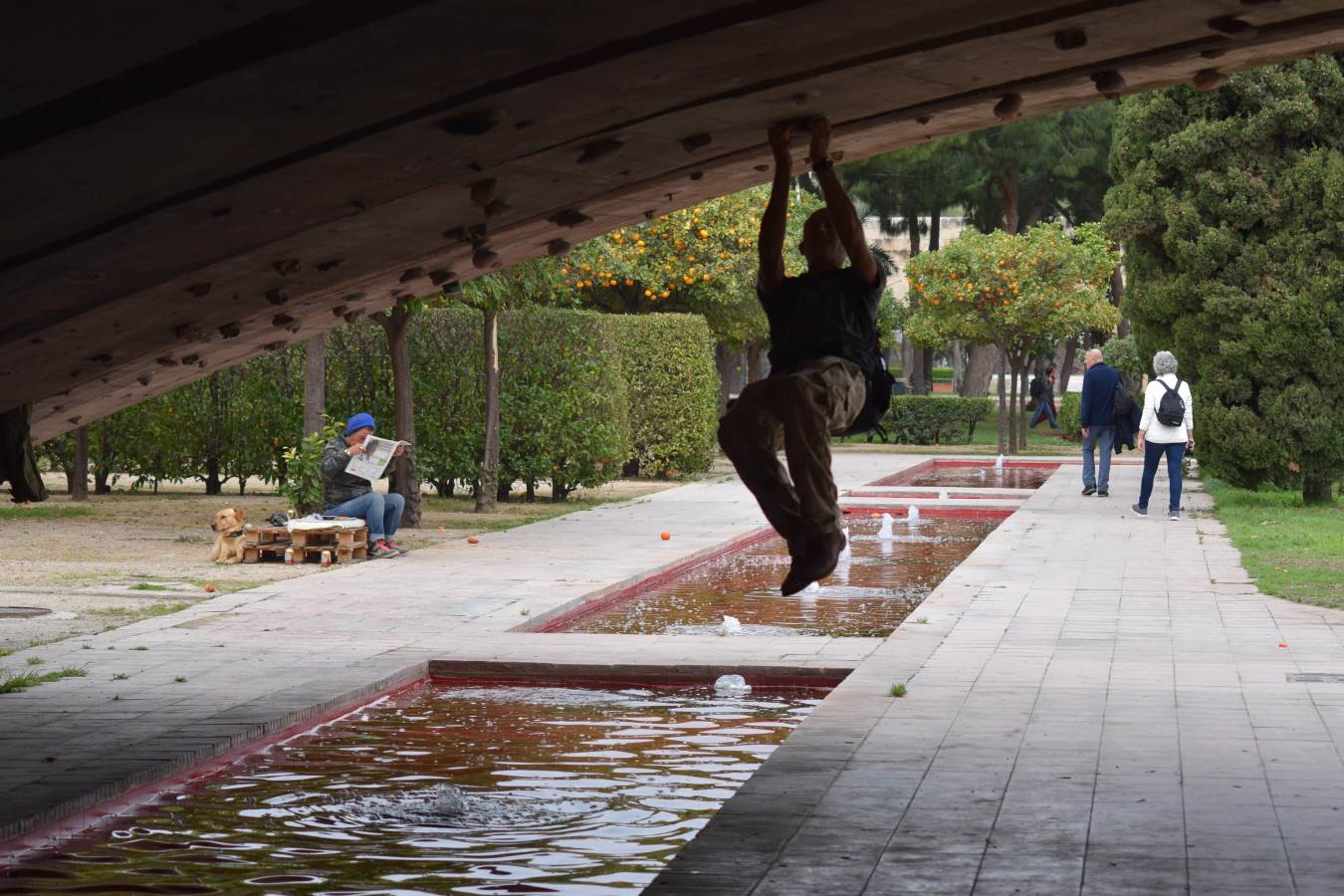
Ralph found his favourite game, too.

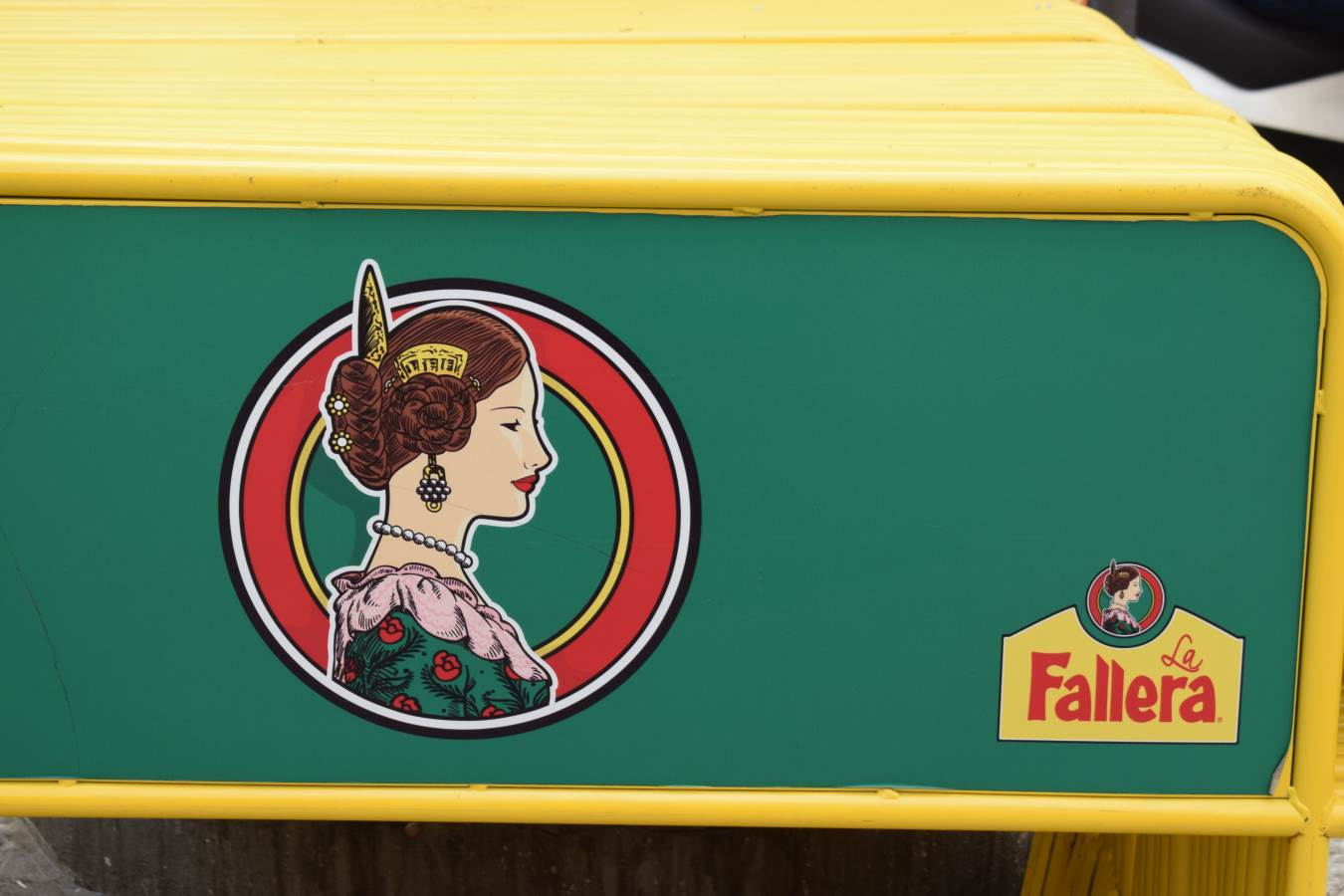
One thing we hadn’t checked was what festivals were going on. As we mooch along – me taste-testing a variety of churros, Ralph enjoying the architecture, we notice a helicopter flying around pretty low. I’m sure something must be going on but everyone around us are chilling and enjoying the afternoon. Suddenly, explosions erupt one after the other! We look to the sky as loud bangs, flashes and clouds of smoke fill the sky! I look around again – nope, everyone still being chilled! We quickly make our way towards the action! The crowds increase until we are all one heaving mass and, just as we get to the centre, a silence decends. The crowds begin to thin and fade into the city streets. I get the lowdown from the policeman who explains that it is Las Falles, a festival to celebrate the end of winter and beginning of spring and, from 15th – 19th of March each year, at 2pm precisely, Mascletà occurs. This is a pyrotechnician’s dream as they orchestrate a series of fireworks and firecrackers – not to stimulate you visually with the colours of explosions we know from Guy Fawkes Night here in the UK, but bodily, through vibrations and rhythms with the sounds of the various explosions forming a kind of music.
Valencia proves to be a city of such amazing variety. From the ornate architecture, the unusual people, the fun and festivals, the greenspaces designed to embrace the contemporary and the cultural, and the above all the atmosphere.


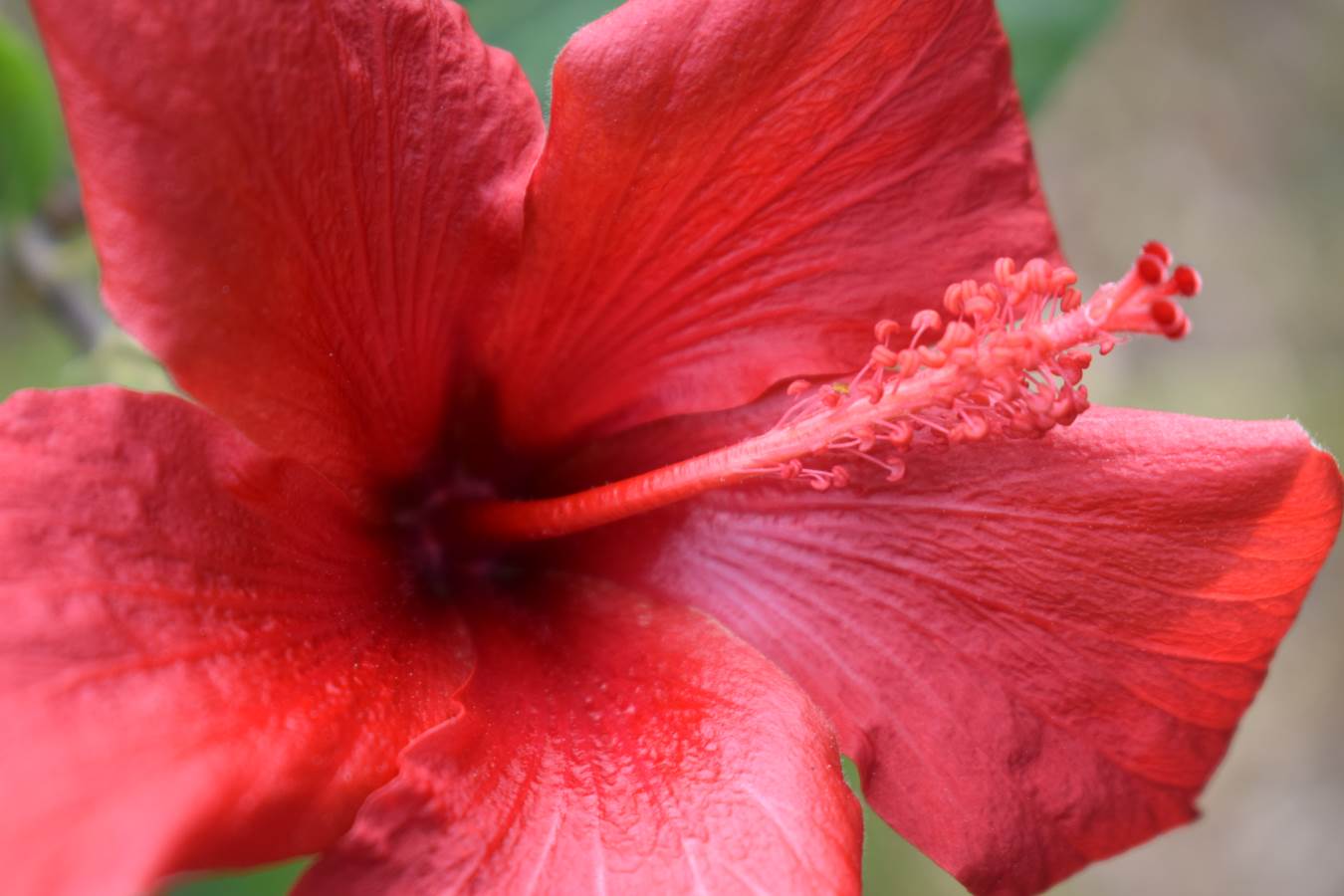

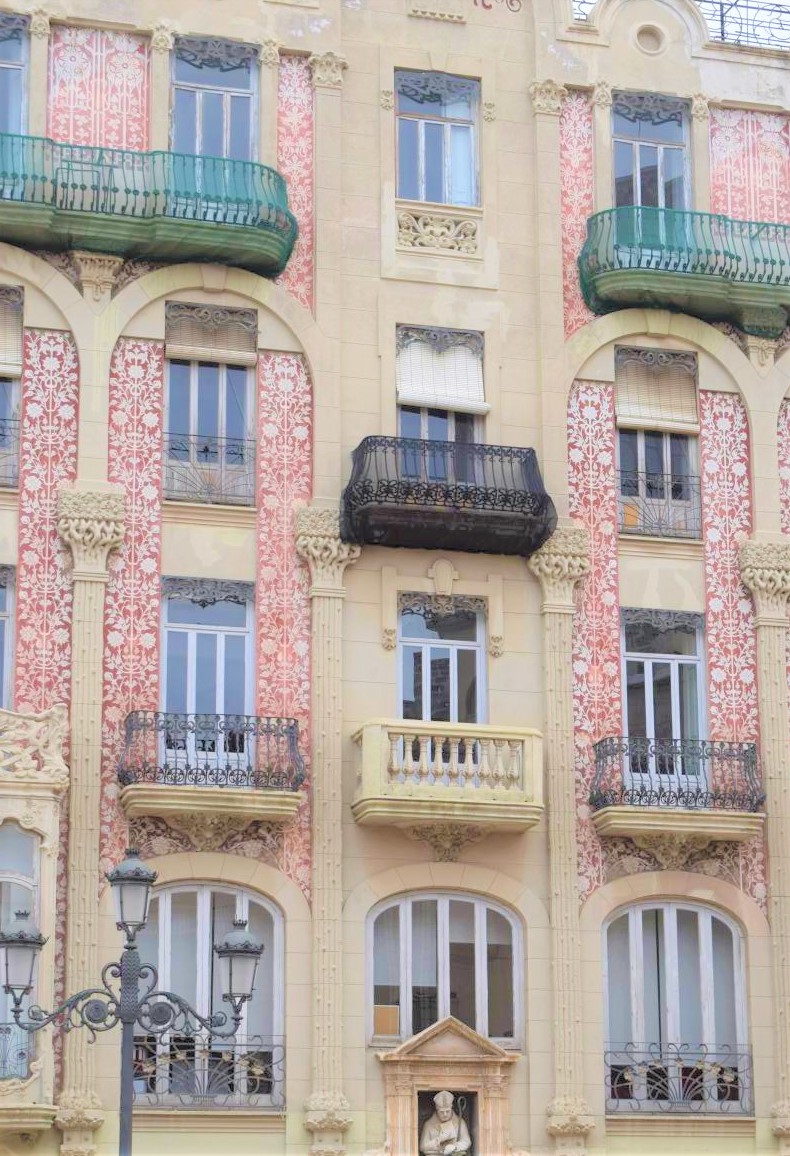


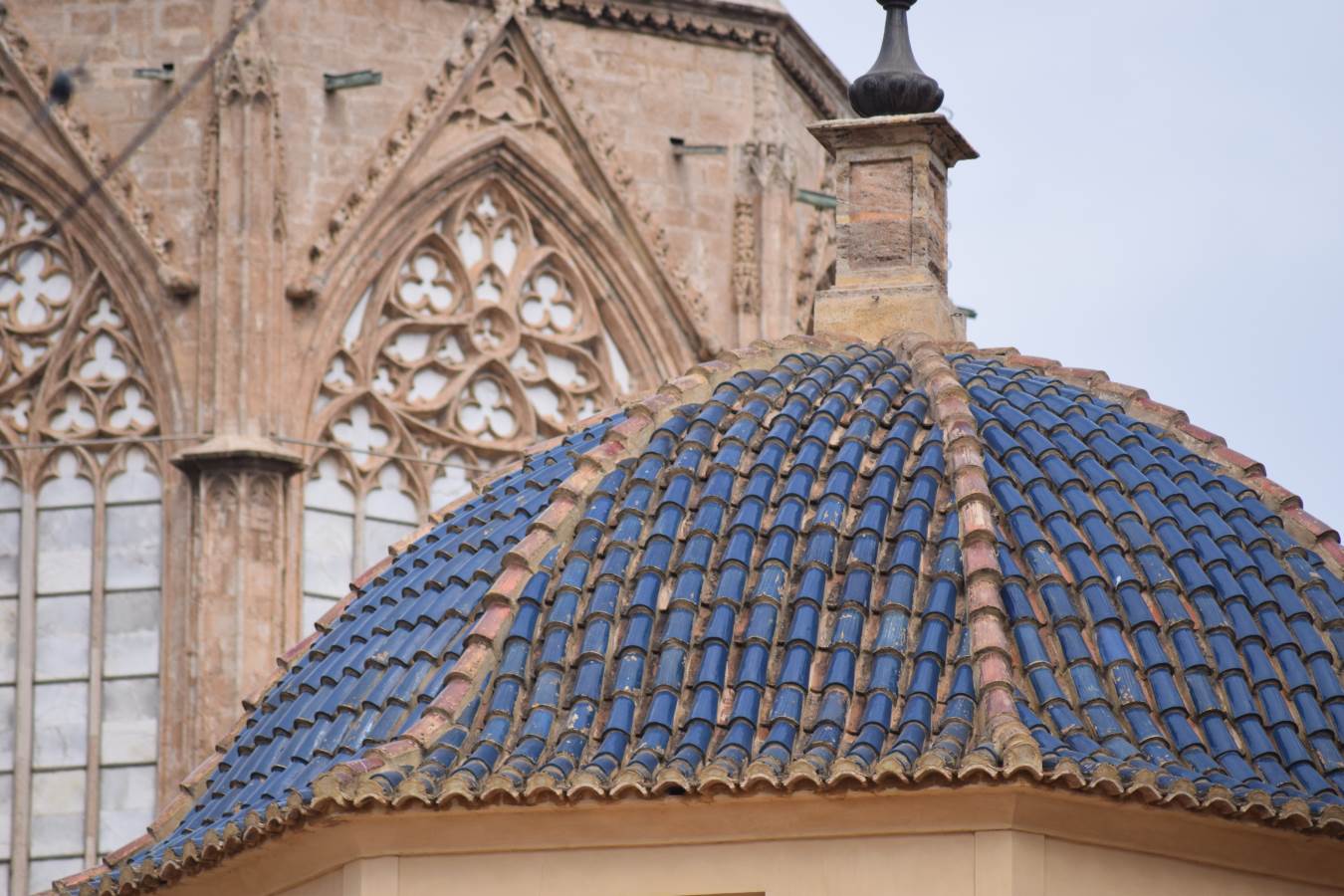








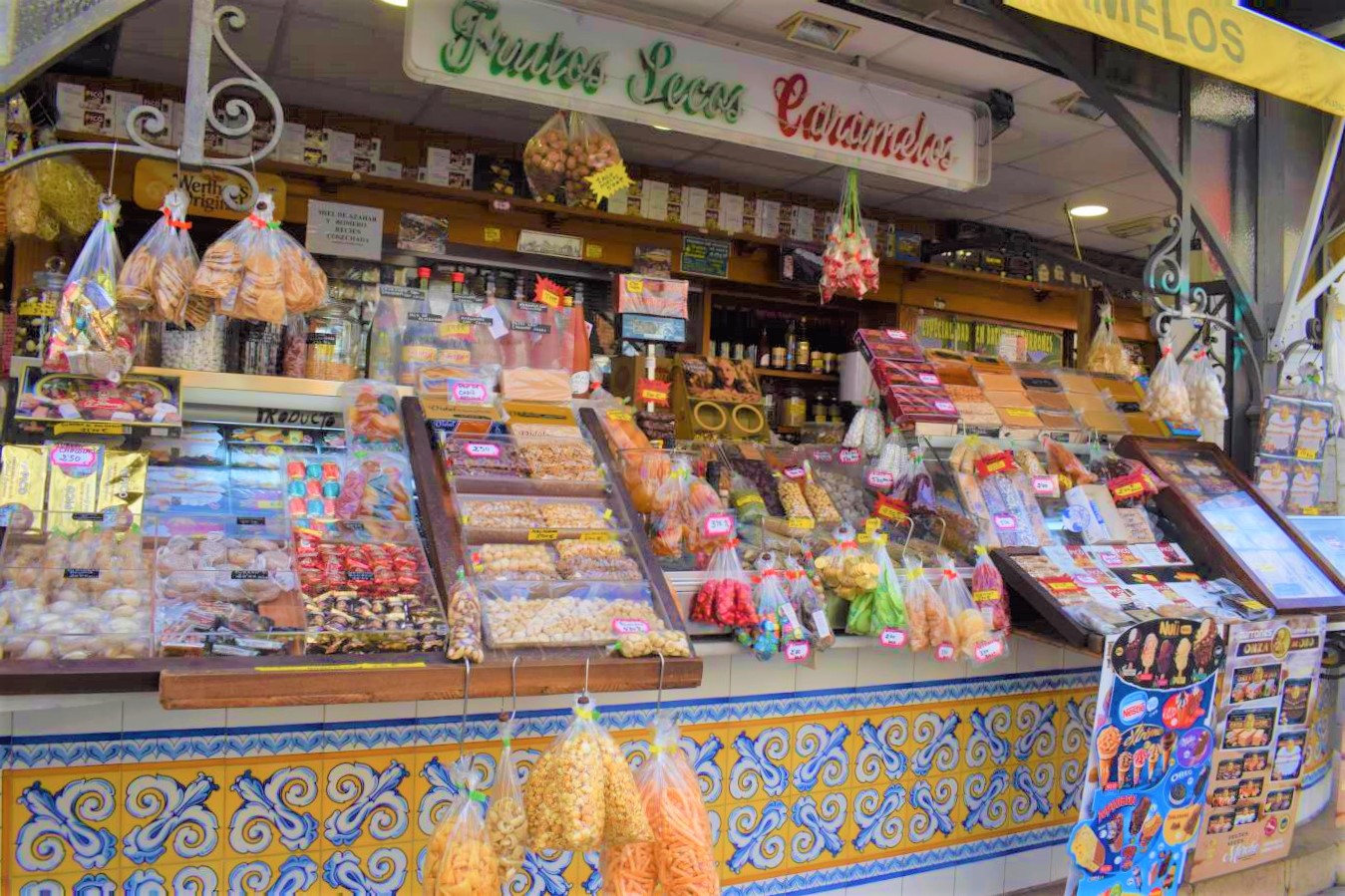

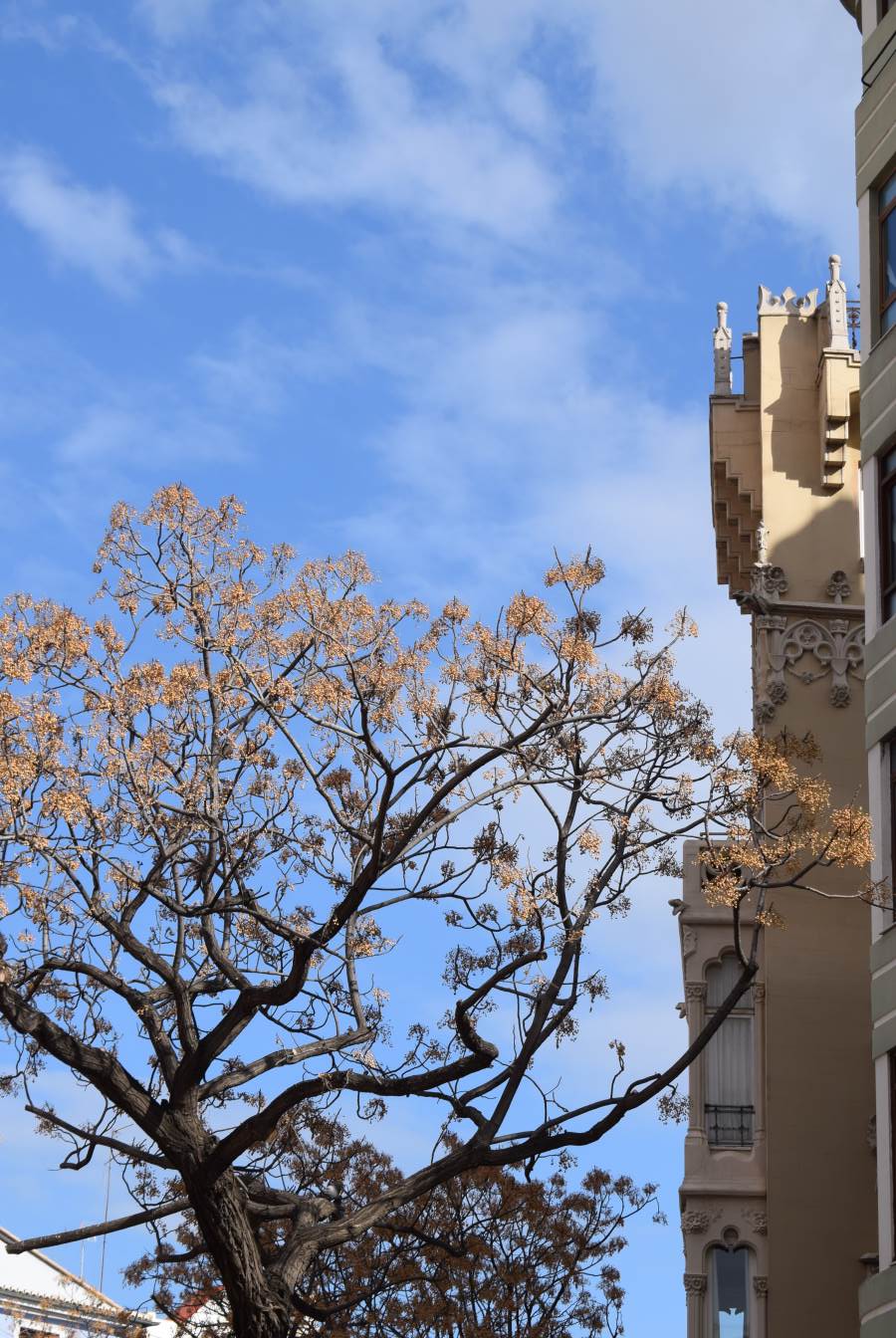



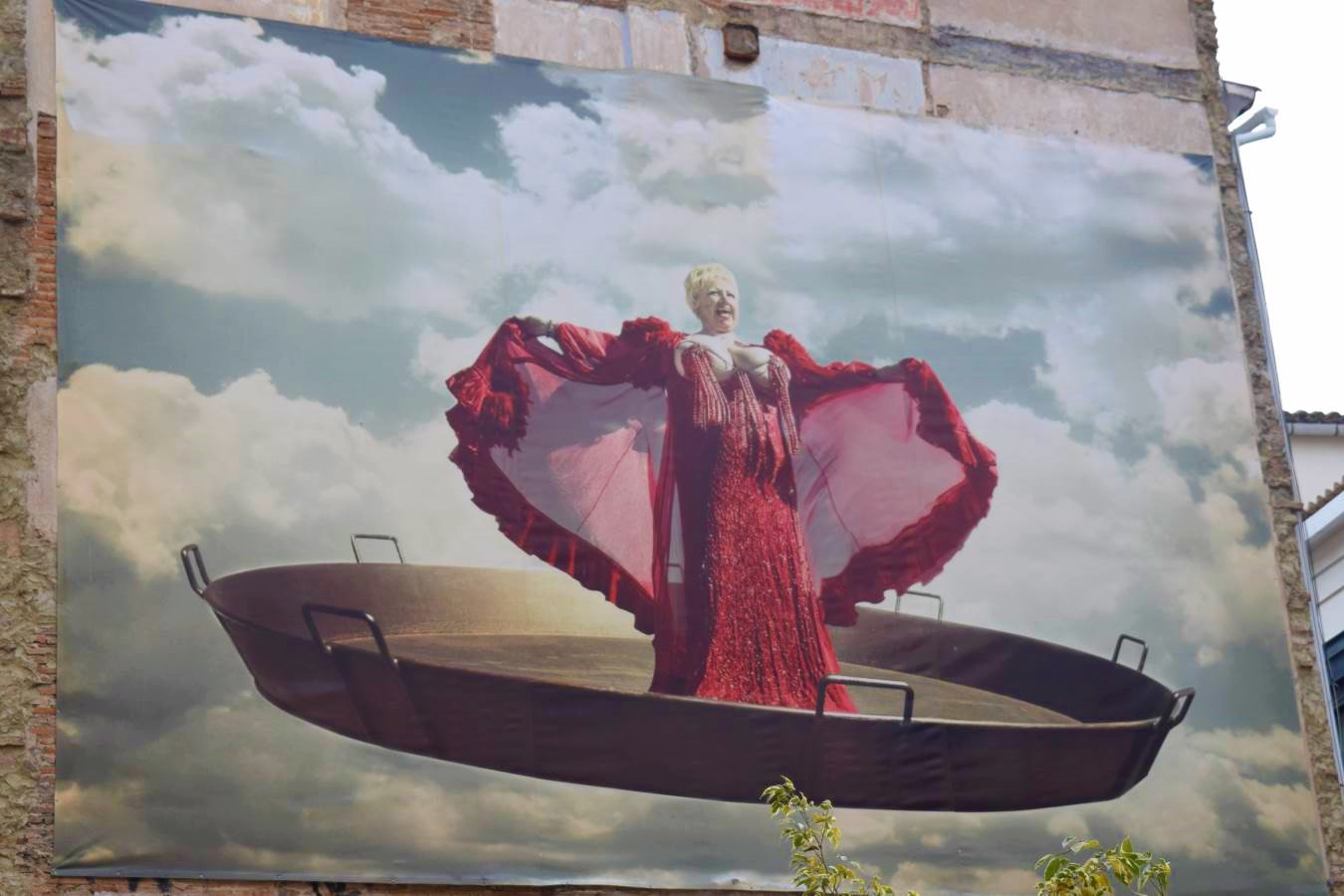
As the fat lady sings over us, we have a beer before walking past the ornate train station through to the new contemporary gardens of the Valencia Central Park. The lead landscape designers, Gustafson Porter + Bowman won the tender in an international competition back in 2011 and the site has been slowly re-development from what was part of the railway to a stunning park.
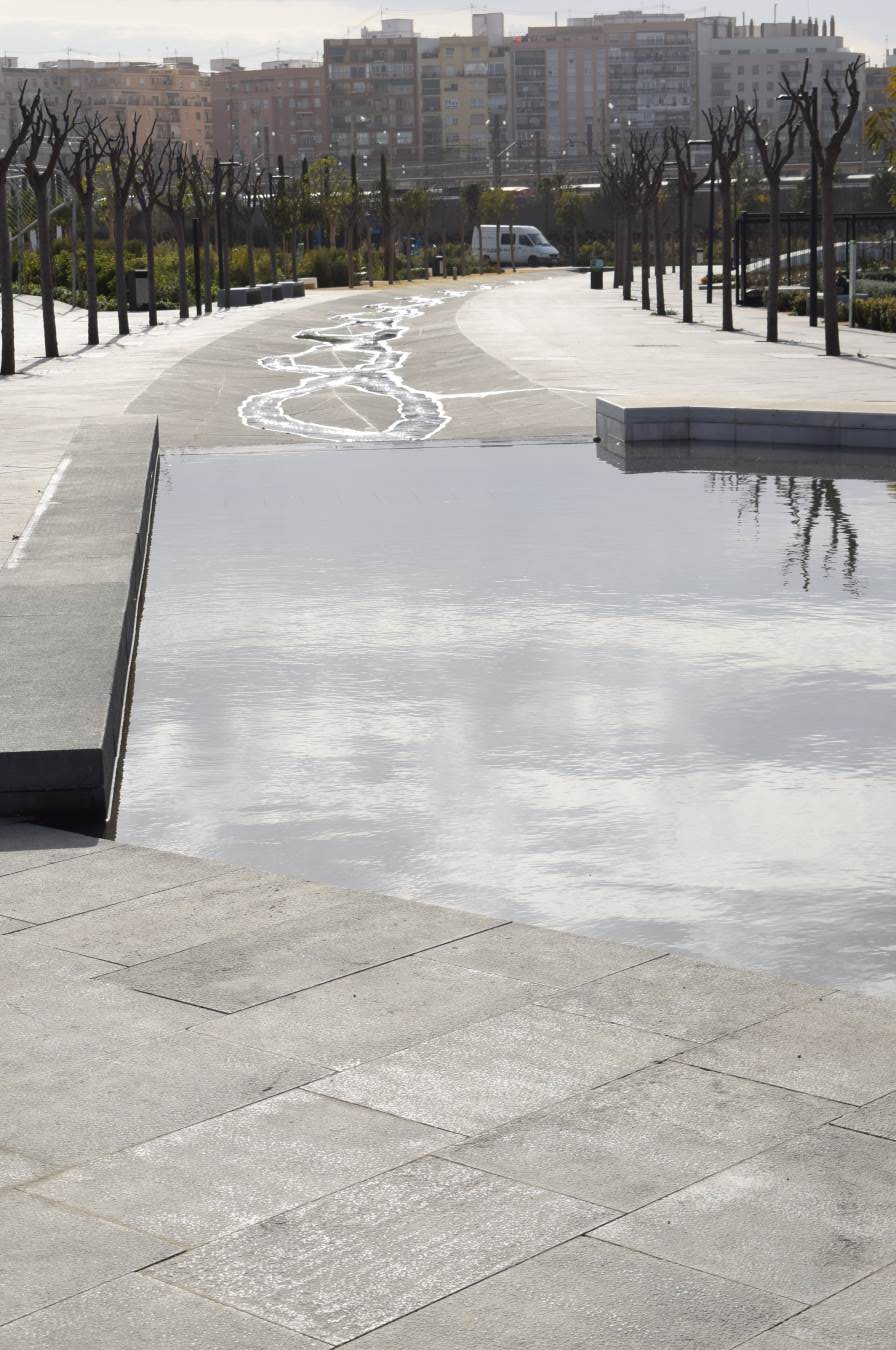




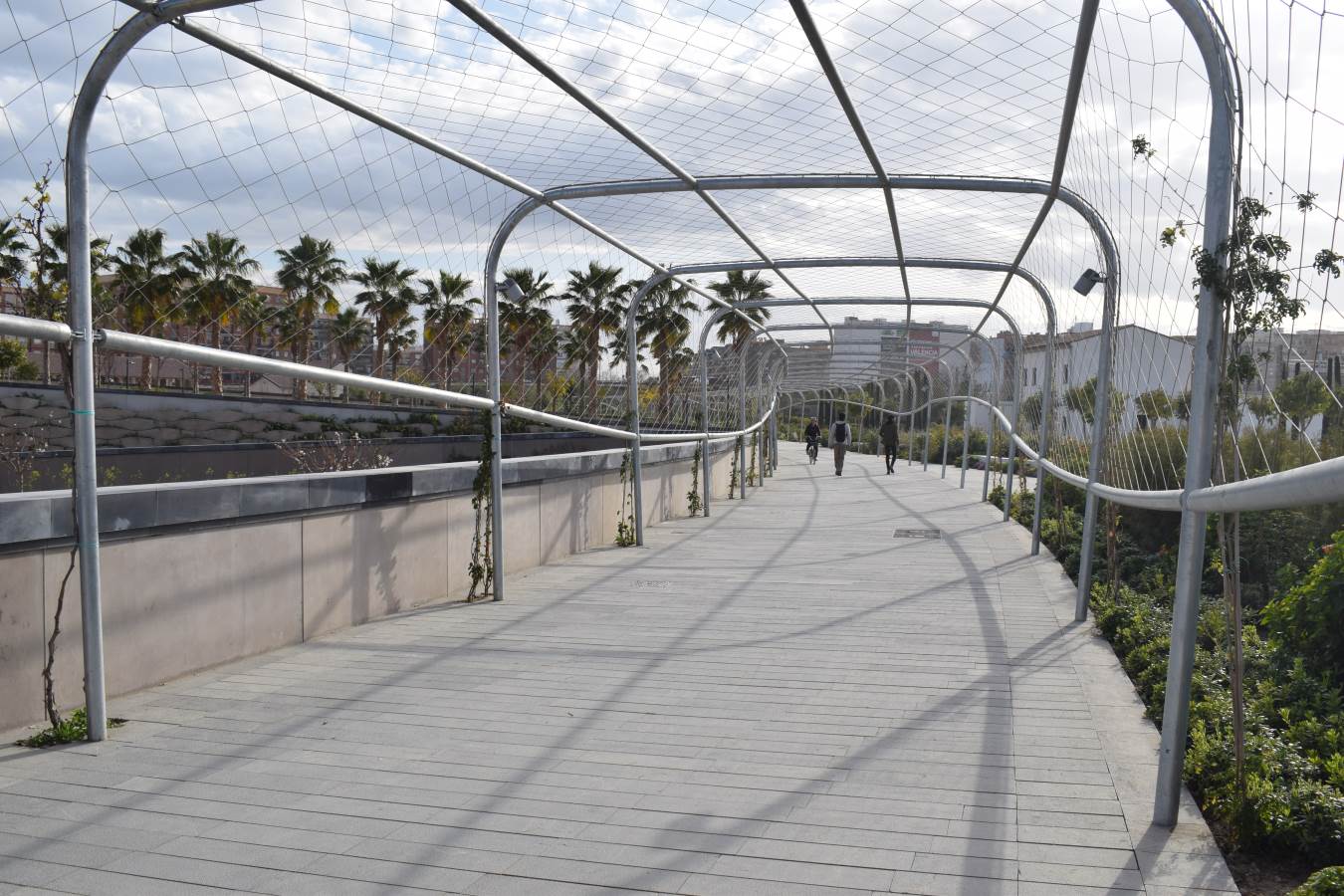



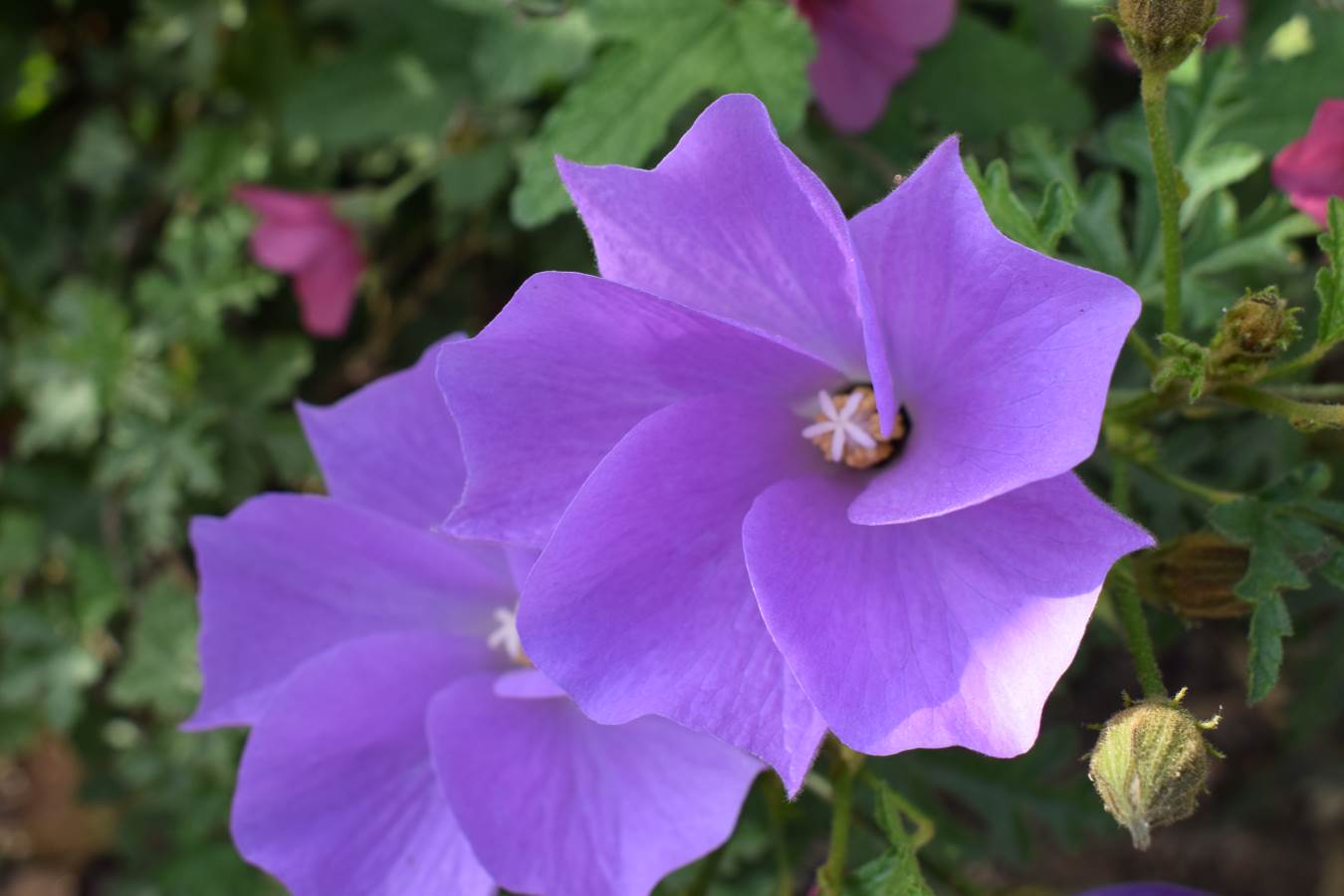






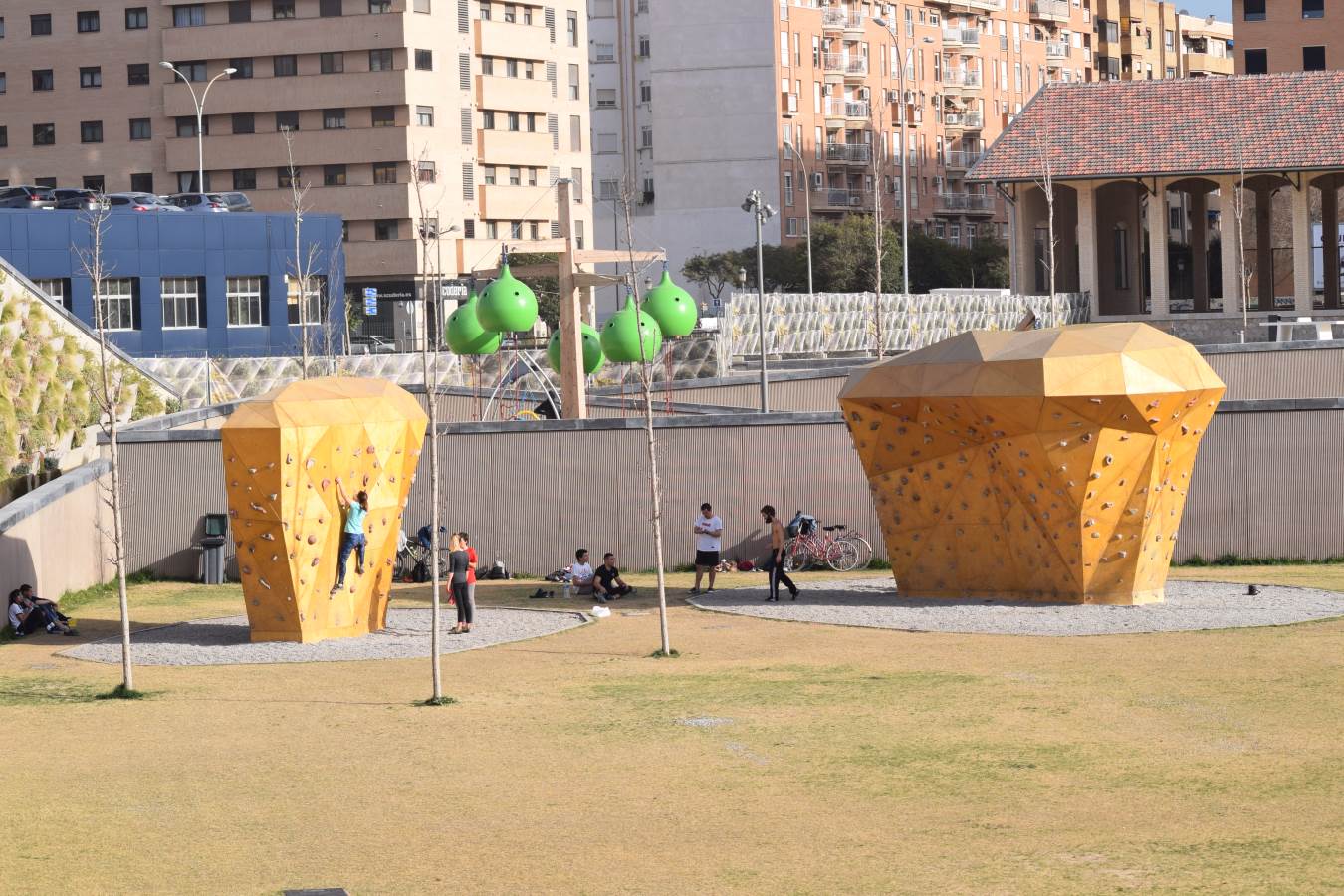


In my humble opinion, this is one of the most stunningly beautiful places I’ve had the delight to experience. Valencia, itself, is a city full of history, culture and fun. I hope we have an opportunity to re-visit it somewhen in the future.


